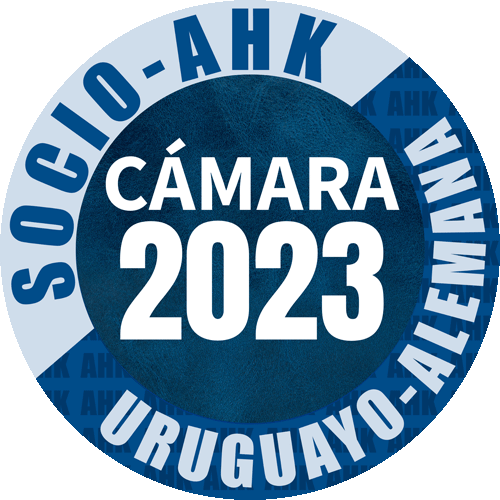The Martin Letter v2i2–Paraguay
March 10th, 2015
The following is an article by Mr. Peter Martin from Martin Financial Solutions, LLC on the country of Paraguay, and the Chaco region, as an investment destination. Mr Martin has gained deep understanding for the country through his extensive visits. Our team had the honour of meeting him in Paraguay over the course of a week in which we discussed the details of investment possibilities in especially the Paraguayan Chaco. His periodic publication THE MARTIN LETTER focuses on various economic trends, as well as investment opportunities and risk management strategies globally.
Southern Connections entirely agrees and validates the content of the following article, which should be of interest to any investor seeking to learn more about the country of Paraguay as an investment destination.
The following article has been posted with permission of the author. For more information please visit: http://martinfinancialsolutions.com
THE MARTIN LETTER Volume 2, Issue 2
If we can but prevent the government from wasting the labours of the people, under the pretence of taking care of them, they must become happy.
–Thomas Jefferson, 3rd U.S. President, Letter to Thomas Cooper, November 29, 1802
America’s health care system is second only to Japan… Canada, Sweden, Great Britain, … well, all of Europe. But you can thank your lucky stars we don’t live in Paraguay!
–Dan Castellaneta, U.S. actor and writer, b. 1958
March 8, 2015
Paraguay
Arrival in Paraguay usually takes place at the airport in Asunción, the capital, at least for most international travelers. While the airport is decent enough, one must unfortunately get into an automobile of some kind in order to drive to one’s hotel room. Given the poverty that exists immediately outside the airport, it is during this drive that one realizes one has arrived in a country that most people still consider part of the Third World. There is blight in the form of ubiquitous potholes, scores of unfinished buildings, and graffiti without end. Some visitors cry.
Despite the blight, the Paraguayan people do not appear downtrodden at all. Quite the opposite, inhabitants of Asunción seem quite intent on doing whatever they are doing. Indeed, the people carry themselves with vigor and vitality. There seems to be a strange pride among Paraguayans, not so much to be arrogant, but enough to be confident of the future. This pride is strange because one doesn’t expect to see it in a nation that has so little in the way of infrastructure. Nevertheless, the pride is there. The people have shrugged off the knowledge of their current economic status, as if they collectively know the elevated status that they will some day achieve. The social culture of Asunción appears to outsiders as one in which one must assert oneself in order to get ahead. For example, traffic is typically ruled by intimidation instead of street lights. But no one minds those who are more assertive, as long as they don’t encroach upon the aristocracy (the Colorado political party). And the reality is that Paraguayans are timid people, with any outward assertiveness merely serving as a front that masks an inner reservedness. The first time they meet someone, there is a wall between them. It takes a second meeting for people to open up to one another.
Frugal, safety conscious people will like Paraguay. Though prices are rising in Paraguay, they are still quite low in comparison to the prices most Westerners would expect. One can still get a healthy, home cooked lunch in a small Asunción restaurant for under $4 USD equivalent. And one could not feel safer in this commercial environment. In 2010, Paraguay was ranked the safest country in Latin America out of 23 countries reviewed by the Global Peace Index. The cambios, or places where one can exchange global currencies for one another, are guarded by men with some rather large guns. In walking through an impoverished area in which the people lived in plywood shacks, this author did not feel that the locals even looked at him in a threatening way. While petty theft certainly does exist, and can be excessive in some areas, crime does not typically become violent.
And while one sees some poverty in Paraguay, one can also see wealthy neighborhoods like Villa Morra as well as shopping malls that remind one of Beverly Hills, California.

There is certainly wealth in Paraguay, so it’s not that hard to escape any feelings of being in the Third World. In general, visitors to Paraguay can expect to find many restaurants of utterly superior quality, with cuisine offered at astonishingly low prices. Even a lavish, cruise ship quality dinner for two people that includes plenty of the world class local Brahma beer is easily obtainable under $35 USD. The atmosphere is frequently one of the utmost class, great elegance, and impeccable service. Standouts that simply must be tried are Bolsi Bar & Restaurant and the Tierra Colorada Gastro. It is not an exaggeration to state that one will rarely have eaten so well in one’s entire lifetime. By comparison, there are major metropolitan areas in the United States that do not have a single restaurant that can touch the quality of these two fine establishments.
Paraguay leans heavily toward the right, politically. There are few countries in the world that are so clearly on the right, perhaps only Colombia coming close to it within South America. But one should not make the mistake of calling Paraguay a fascist nation. Instead, Paraguay is a country that has fully embraced free market capitalism. It’s current President, Horacio Cartes, is known simply as “the capitalist.” In addition to his duties as the country’s leader, Cartes maintains his previous position as head of his family’s congomerate. That conglomerate encompasses more than twenty companies. Among them are Banco Amambay, one of the nation’s largest banks, along with a cigarette factory and several agricultural ventures. Recently, Horacio Cartes and Banco Amambay were the subject of a money laundering investigation by the U.S. Drug Enforcement Administration and the Bureau of Alcohol, Tobacco, Firearms and Explosives, according to 2010 Wikileaks diplomatic cables. Though such accusations have never resulted in convictions, it was not the only time that Banco Amambay and its officials made headlines for alleged money laundering. In March 2013, the head of Paraguay’s anti-money laundering agency said that Banco Amambay was being investigated alongside other financial institutions for illegal overseas money transfers. The following day the official recanted his words, stating that he had misspoken. Amambay did deny any involvement in criminal activities. The Cook Islands bank, Amambay Trust Bank Ltd., apparently had no building or staff, but held a banking license that allowed it to perform financial transactions like a normal bank. In its license application, it stated an intent “to provide banking services to investors that need financing alternatives not available from local banks in Paraguay.” (http://www.icij.org/offshore/bank- owned-paraguays-leading-presidential-candidate-linked-tax-haven) This newsletter does not wish to allocate any kind of importance to such money laundering allegations, but simply to relate them for information’s sake.
Getting back to the implications of Paraguay’s political leanings, one might think that a very heavily right-leaning government would be unfavorable for the common folk, but one would be wrong. Instead, at least one survey suggests that Paraguayans are the happiest people on Earth! (http://www.nbcnews.com/health/health-news/worlds-happiest-country-would-you-believe- paraguay-n110981) This happiness most likely stems from a mentality that differs from that of most Western nations. Europe, North America, and most of South America contain populations that have become entitlement societies. These societies expect perks and handouts from their governments, and they know how to vote for a continuation of such largesse. Such expectations do not exist in Paraguay, a country where every person knows that if they do not work, then they will be fired, and possibly starve. Recently, the breakdown of the 45-person Senate was that only three senators are socialist, ~40% is the Colorado (conservative aristocracy) Party, ~30% is the Liberal (libertarian) Party, ~10% is the extreme right (military), and another ~10% is the religious right. There is virtually no socialism in Paraguay in the form of some kind of social safety net, and there never really has been. Thus, the people don’t long for any handouts that their nation never gave them. Little boys don’t even expect allowances from parents. Instead, they learn to provide a service to earn money, such as shining shoes for international travelers.
About 56% of Paraguayans live in urban areas, making Paraguay one of the least urbanized nations in South America. And in a strange development different from most other urbanizing countries, extreme poverty seems to disappear the farther one goes out into the countryside. Paraguayan country folk live orderly, respectable lives in decent housing. A U.S. citizen may be reminded of Wisconsin. That said, one must also acknowledge that some small farmers in Paraguay have had their lands poisoned with chemicals, or taken away from them. (http://revista- amauta.org/2012/07/a-coup-over-land-the-resource-war-behind-paraguays-crisis/) In these cases, the country’s right leaning politics imply some unfortunate liaisons between large agrobusinesses and the government. First, Monsanto has brought its GMOs into the country in large amounts. Second, and not to be outdone, the Cargill Corporation owns large tracts of this fertile farmland. Cargill owns a great deal of corn, soybean, and wheat production. It is interesting that Cargill is stressing those crops that do not require bees for pollination, thus removing the risk associated with colony collapse disorder. Cargill is represented in Paraguay by Aldo Zucolillo, the head of the Zucolillo Group. This conglomerate encompasses ABC Color newspaper, Mariscal Lopez Shopping, Nueva Americana Shopping, Inmobilieria del Este (real estate), and Zusa (petroleum). Obviously, Zucolillo has great power, and that power is working with Cargill. On the bright side, there are still plenty of smaller private farms for production of important crops.
Ironically, the Paraguayan middle class now seems to benefit economically precisely because the country does not exhibit any socialism, the political philosophy that is supposed to help commoners. From 2003 until 2011, income per capita has increased from $950 to $3,649, a remarkable multiple of ~3.5 in a country with a strong currency and low price inflation. The key is that the lack of socialism is driving a great deal of foreign investment capital into Paraguay. After all, international capital will flow to those locations where capital is treated well, leading to prosperity. Examples include Singapore in the late 20th century, Hong Kong in the mid-20th century, and post-Soviet Estonia. In Paraguay, the government collects almost all of its revenue through sales tax. The threshold for income taxes is set high enough such that 65% of the population does not pay income tax, which is merely a flat 10% for those individuals and companies that do pay it. There is not even a tax on exports, merely on the profit obtained from the export operations. With low income taxes on the individual and corporate levels, minimal red tape, laissez-faire regulations, and a welcoming attitude regarding foreign and domestic
business, Paraguay is a magnet for investment capital that is gushing in from overseas. This writer sat down with the top two officers of the largest Paraguayan brokerage, Valores Casa de Bolsa, in small part to offer the services of Martin Financial Solutions to any parties interested in investing outside of Paraguay. Politely, the response from the officers was that the money flow is actually moving in the opposite direction, i.e. from the outside into Paraguay.
Naturally, a country receiving so much foreign direct investment capital achieves uncommon growth. Between 1970 and 2013, Paraguay had the highest economic growth of South America, with an average GDP growth rate of 7.2% per year. Amazingly, this stellar long-term growth rate may actually be accelerating. In the more recent years of 2010 and 2013, Paraguay experienced the greatest economic expansion of South America, with rates of 15.3% and 13.6%, respectively. (https://www.bcp.gov.py/) It is no wonder that the IMF (International Monetary Fund) currently expects Paraguay to grow real GDP at faster than 6% for the foreseeable future, with Peru being the only other country in South America to match that expectation. In fact, the IMF expects that hardly any other countries–other than a few in Southeast Asia and Africa–on Earth will maintain such blistering growth.
But it’s not nearly fair to Paraguay to attribute its growth solely to foreign direct investment. No, the people’s work ethic also has a lot to do with it, naturally magnified by the low tax environment that creates the incentive to work so hard. This tiny nation of only ~6.8 million inhabitants boasts some remarkable statistics. Paraguay is the fourth-largest soybean producer in the world, second-largest producer of stevia, second-largest producer of tung, sixth-largest exporter of corn, tenth-largest exporter of wheat, and 8th largest exporter of beef. (http:// paraguay-un-milagro-americano.blogspot.com/) Though most agricultural operations are automated in Paraguay, an occasional horse and buggy is still there to remind one of the country’s past. The market economy is distinguished by a large informal sector, featuring the activities of thousands of microenterprises and urban street vendors. Nonetheless, over the last ten years, the Paraguayan economy diversified dramatically: energy, auto parts, and clothing industries led the way. Farm equipment suppliers like John Deere are heavily entrenched in Paraguay, putting their equipment on exhibit at agrobusiness fairs in Asunción.
The medical sector, while perhaps not world class, is nevertheless more than adequate. Many doctors have studied overseas, and the equipment is all First World. This writer has personally experienced quick and highly effective medical attention. Back in the U.S., the same level of service would have cost 15 times as much as it did in Paraguay. One would waste away in a waiting room, filling out endless paperwork, and then spend countless hours arguing with an insurance company. In Paraguay, by contrast, this writer barely had time to sit down before being called in to see the first nurse! People who have “rolling” veins sometimes experience difficulty when blood must be drawn for medical tests; many nurses and specialists often miss the mark, causing the patient pain and irritation. In Paraguay, this author who does have “rolling” veins experienced the unexpected delight of a nurse who hit the mark the first time, and without hesitation! It was amazing! Oh, and each nurse was prettier than the one before. And the doctor didn’t just diagnose this author’s issue with professional ease and a very inexpensive prescription that worked right away, but she was also gorgeous. This experience makes Dan Castellaneta’s opening quote very inappropriate. One receives kind, attentive, thorough, friendly, and knowledgeable medical attention in Paraguay. Most U.S. citizens would worry about not having any medical insurance down there. Such a consideration is silly; fully priced payment for medical care in Paraguay is so inexpensive that one does not need insurance. In a country like
Paraguay that does not have a bloated government replete with overregulation and central planning, medical costs remain in check all by themselves.
The energy sector of Paraguay is one of its most noteworthy economic achievements. The hydroelectric power generation plant at Itaipu is by some standards the largest in the world, challenged mainly by Three Gorges Dam in China.
Clean and renewable energy production of 8.700 MW compares quite abundantly to current domestic demand of only 2.300 MW. Yes, Paraguay is most certainly a net energy exporter. Itaipu is truly gigantic, measuring 8km across the dam area. There are twenty turbines, the white cyclinders in the picture on the right above, each one large enough to encompass three buses in its diameter. Brazil and Paraguay each own ten turbines. Given that Paraguay only needs about two of those turbines for its own domestic power needs, it sells the rest of the surplus generated energy from the other eight turbines to Argentina and Brazil. The 1983 loan to build Itaipu has a 40-year payback schedule that will run its course in 2023.
Despite all the growth of Paraguay, price inflation has remained under control lately, thus permitting real wealth to accumulate. Historically, price inflation has been around 5% on average. In 2013, the price inflation rate was just 3.7%. There are occasional large differences in prices on the same imported items being sold in different locations. This author believes that these large price differences result from only a subset of all vendors applying the required import tariffs to the items that they sell. Amazingly, Paraguay’s international reserves are 20.8% of GDP, and twice the amount of the external national debt. One can still obtain low-priced land, but prices are rising for such assets. As recently as 2012, a 90-hectare cotton farm near Coronel Bogado in the fertile Itapúa Departmento was being sold for just $2278 per hectare.
Much of Paraguay’s tame price inflation should be attributed to its relatively strong currency. Recently, nearly all currencies have lost ground to the U.S. dollar (USD), but the Paraguayan guarani (PYG) has held its ground. The Paraguayan government is aware of the rampant price inflation in neighboring Argentina, and the Paraguayan central bank is maintaining fiscal discipline so as not to mirror that outcome. Right or wrong, central banks are always concerned with deflationary spirals. In Paraguay, the central bank need not concern itself with such a thing because there is too much foreign capital entering the country. Even if the Paraguayan central bank turned off its printing press entirely, not creating any further guarani, price inflation would likely drift gently upward just because of the capital influx coming in from the outside. This author would like to know of a currency with a stronger 10-year record against the USD:
One should not be surprised. The guarani has been in its current form for more than 40 years, and the country has a debt to GDP ratio of merely 15.16%, a percentage that has fallen from 32.5% in 2006.
One’s connections define one’s social status in Paraguay. U.S. citizens are often treated almost like celebrities, with U.S. culture greatly appreciated. U.S. citizens are deemed to be from a rich country, thus automatically elevating their social status. In fact, all things being equal, a U.S. citizen would likely be favored in a legal dispute with a Paraguayan citizen because a Paraguayan court will tend to favor higher, more connected classes of people. The quality of a Paraguayan’s alma mater impacts social status, but only half for the education received, the other half coming from the connections one built while in school.
In Paraguay, one can typically get most things that one would reasonably want by sending a nice bottle of wine or scotch to the appropriate government official. The reader should not scoff at such a practice, for it does exist in developed countries as well. In the United States, for example, this practice is given the euphemisms “campaign contributions” and “lobbying.” But that’s just a fancy, evasive way to say bribes and payoffs. Just look at how much power the unions have had over President Obama, ever since they delivered the reelection victory to him.
The politics of Paraguay is simultaneously its greatest attribute as well as its greatest red flag. On the positive side, socialism is almost non-existent in Paraguay. One can almost say that if one does not work, then one starves. Rarely will one find a country that leans so far to the right politically, while still remaining in the confines of a democratic republic. But the negative is that the political leaders themselves change so very often, resulting in a lack of stability of rules. There is plenty of stability of culture, the streets, and the way in which locals interact with one another. It’s just that regulations change because leadership frequently changes. The thinking
has been that one needs to take advantage when one’s friends get into power because one may lose one’s opportunity just six months later. This phenomenon may very well be a phase, a leftover from a time when Paraguay was far more impoverished than it is today. In time, this aspect of life in Paraguay should change for the better. After all, right-leaning Colombia was once a place known for kidnappings, and yet is now developing very nicely.
Paraguay boasts the third most important free commercial zone in the world: Ciudad del Este trails only Miami and Hong Kong. Indeed, import statistics are difficult to confirm for Paraguay because perhaps half of all imported consumer goods are illegally re-exported to Argentina or Brazil, mainly through Ciudad del Este. It is that city that is likely responsible for the bad reputation that Paraguay gets for corruption. Among the nations of the world, Paraguay typically ranks in the bottom third when it comes to measures of the presence of corruption.
Ciudad del Este is nothing like Asunción. This author will never forget his first visit to Ciudad del Este. It was a dark and foggy night, with lots of noise. Stereo sound blared from shops and subwoofers placed on the tops of automobiles. Traffic lacked any rules other than intimidation and the occasional thumbs up to someone one knows. There is filth, smells, rough looking men wearing all black, scantily clad women, and what must be the highest motorcycles per capita of any city in the world. The rough and tough mood exhibited by Ciudad del Este makes it nearly the real world manifestation of Frank Miller’s Sin City.
And yet Ciudad del Este does provide a springboard from which one can explore some nice tourist areas. Just to the East lie the world famous Iguaçu Falls that prompted former United States First Lady, Eleanor Roosevelt, to say “poor Niagara.” The access points to these Falls are in Argentina and Brazil, not in Paraguay. Nevertheless, Paraguay does have its own very beautiful waterfall, Saltos del Monday, located in the same general area:

The Eastern region of Paraguay near Ciudad del Este sits on top of the Guarani Aquifer, perhaps the largest single body of groundwater in the world. That’s probably why the tap water in Ciudad del Este tastes as clean as does the bottled water in the United States.
There are pros and cons about Paraguay, just as there are with every country. But in this author’s view, the pros of Paraguay outweigh the cons. In Paraguay, it is clear that commerce comes first. If a project involves economic advantage and opportunity, then it will be pursued in Paraguay, and the Paraguayan government will not stand in the way of it. Paraguay is one of the few remaining countries of the world that exhibits true economic freedom. For this reason, Paraguay is already a mainstream investment capital destination. It is no longer a backwater country that no one ever thinks about outside of its borders. While its ~6.8 million inhabitants are too few to make it a major powerhouse economy, it can attain a similar economic status as some of the “Asian Tiger” nations like South Korea, Thailand, or Vietnam. Certainly its status as a net energy exporter gives it a powerful edge in cross-border trade.
Paraguay is just starting to discover its own fortunate position. Recently, Paraguay was suspended from the Mercosur South American trading block, its neighbors having hoped that Paraguay would learn a lesson from that suspension. Indeed, Paraguay did learn a lesson, only it was not the lesson its neighbors had desired. The intended lesson was for Paraguay to lean more left politically, as one of the main reasons for the suspension was that its Senate acted against a President who infringed upon the property rights of wealthy landowners. Of course, the stated reason for Paraguay’s Mercosur suspension was something different: the country’s so-called “unconstitutional” impeachment of its former President, Fernando Lugo. But the ousting was constitutional. And instead of Paraguay learning the lesson that its neighbors desired, something entirely different took place. Paraguay’s suspension from Mercosur may well have been the best thing that could have ever happened for the country. Once it was outside of the restrictions and supposed “benefits” of that trading block, Paraguay discovered that it didn’t need to be a part of it! Its economic growth continued unabated in spite of the lack of approval of Brazil, Argentina, and other larger South American countries that are Paraguay’s main trading partners. In fact, seemingly to drive the point of economic invulnerability home, the Paraguayan Senate overwhelmingly voted against Mercosur admission of the leftist Hugo Chavez regime in Venezuela. Since then, Paraguay has been admitted back into Mercosur, and the Paraguayan Senate voted in favor of Venezuela’s Mercosur admission. But there is a lingering and healthy Paraguayan indifference regarding Paraguay’s very own membership in the trading block.
Big things have small beginnings. South Korea was once an insignificant backwater before it became an “Asian Tiger,” producing Hyundai, LG, and Samsung. Unfortunately, Paraguay suffered through a few leaders who were too far to the right, i.e. fascist. At this point, the country seems slammed up against the right wall of centrism, just left of fascism, and strongly in the realm of being a market-based economy. The whole country seems to innately understand that economic freedom is paramount to prosperity. As a result, there is a major influx of people and capital going into Paraguay. Traffic in Asunción has become much worse in the last two years, so people are definitely discovering Paraguay. There is no guarantee that it will continue, but a period of political stability seems to have finally arrived for Paraguay. Perhaps one can conclude that increasing prosperity brings about political stability. Paraguay deserves that.
Paraguay is not only a rising “South American Tiger,” but it has realized through an easy breezy survival of its Mercosur suspension that it has the capacity to be a rebel country. Paraguay is capable of withstanding any bullying by corrupt outside influences seeking to shake Paraguay from its straight and true course of free market capitalism. Just imagine how much investment capital will continue to flow into Paraguay if it merely continues in its currently lax implementation of U.S. laws like FATCA. One of the subscribers to this newsletter is a U.S. citizen with three accounts outside of the United States, one of which is in Paraguay. This subscriber only received a FATCA-related letter from the two non-Paraguayan accounts. One possible reason for Paraguay’s apparent aloofness regarding U.S. decrees is that Paraguay is basically economically independent of the United States. Though the actual percentage is dependent on one’s source, the percentage of Paraguay’s exports going to the United States is at most 5.1%, and that reading seems very much dated. More recent data show that this percentage has declined from 4.5% in 2000 to a mere 1.88% in June of 2013. The import side is less important to a country’s economic sovereignty, given that a country can relatively easily find a new source for most imported goods, whereas replacement of a buyer of its exports is much more difficult. But even on the import side, Paraguay imports at most 8.7% of its imports from the United States, and more likely a mere 4.43%.
Paraguay’s trade is focusing more and more on its fellow South American countries, with only Russia playing a mildly important role for its exports, and China playing an important role for its imports. Unlike Switzerland, a country the United States recently bullied into changing its own long-held bank secrecy laws, Paraguay has a measure of economic sovereignty. If the U.S. were to cut off all trade with Paraguay, then Paraguay would experience an insignificant blip on an otherwise unstoppable upward path of economic growth. As a percentage of GDP, exports in 2013 were 49.4% for Paraguay, having declined from 55.1% in 2010. The implication is that Paraguay is building its own internal markets, making its economy more robust against outside declines that may occur.
But now multiply that 49.4% with the export percentage to the United States, which seems to be at most 3%, if one is generous. The implication is that if the U.S. were to cut off its imports from Paraguay, then Paraguay would likely suffer something like a 1.5% reduction in GDP. Paraguay can withstand such a hit to its otherwise stellar growth.
It has been suggested that if the United States cannot muscle Paraguay directly, then it could do so through Brazil and Argentina, two of Paraguay’s largest trading partners. It’s an interesting idea worthy of qualitative analysis. Such a U.S. attempt to control Paraguay would likely fail even though Paraguayans greatly admire U.S. culture. Brazil has a history of flouting the decrees of the United States, and is rapidly advancing its path toward technological independence and autonomy. And with the monetary decline taking place in Argentina, it is likely that country will not have a solvent government much longer. After the Argentine government collapses, it will be basically impossible for the United States to manipulate Paraguay through Argentina. Even today, Argentina is not even capable of controlling its own citizens, as evidenced by the regular flouting of income taxes by Argentine citizens, and also by the lack of influence Buenos Aires has with respect to that country’s outer regions like Salta Province. If the Argentine government cannot even dominate its own people, then the United States can hardly rely upon Argentina to dominate Paraguay.
With Paraguay, the reader has a choice to either get on board or step aside; either way, prepare to watch it rise. For lo and behold, the formula that led to the greatness of the United States of America is a formula that still works! A small, nonintrusive government that doesn’t bog down the economy with excessive regulations or taxes is a government that will witness its people taking the bull by the horns. When people know that they will be able to keep most of the fruits of their own labors, then they will work hard to generate growth. Such an economy always grows faster than the economies of other countries. And the reader will be pleased to know that this Jeffersonian formula of success is still being applied today; only the location of its application has changed, from the United States to Paraguay. While one can point out infrastructure superiority in the United States as compared to Paraguay, one cannot point toward the same advantage among U.S. people versus Paraguayans. And when it comes to trajectory, it is clear that the U.S. has already seen its brightest days, whereas Paraguay sees nothing but blue skies ahead. In Paraguay, one finds a nation that is admittedly starting from a lower base, but is now doing just about everything right in order to sustain growth, prosperity, and happiness.
Upon realizing that the typical international traveler must leave Paraguay, a familiar feeling in the eyes creeps up again as it did upon arrival, only for different reasons this time. Upon arrival, the traveler wanted to cry because of all the blight immediately surrounding the airport. But during the traveler’s stay in Paraguay, the people, the fantastic cuisine, and the social and economic freedoms of the country cause a reaction of being overjoyed to have found such a remarkable place. One realizes that happiness lives in Paraguay because Paraguay is one of the very few places in the world where happiness is not being hunted. Along the lines of privacy, this writer can relate having been immediately struck by a social freedom that exists in Paraguay even though it was deemed long gone in the United States. From one’s hotel room in Paraguay, one can telephone anyone else in Paraguay, and say anything at all that one wishes to say without any fear of being recorded! That was a very nice feeling of social freedom. And so upon leaving, the traveler to Paraguay cries again. It’s always twice that one wishes to cry in Paraguay, upon entering and then again upon leaving.
The Chaco
Paraguay’s population is distributed unevenly through the country, with the vast majority of people living in the eastern region near the capital and largest city, Asunción, which accounts for 10% of the country’s population. The Gran Chaco region, which includes the Alto Paraguay, Boquerón, and Presidente Hayes Department, and accounts for about 60% of Paraguay’s area, is home to less than 2% of the population.
Departing from central Asunción, it’s about a 6.5-hour drive to the Chaco. Any 3-week trip to Paraguay is incomplete without visiting this most unique stretch of land. This author was fortunate enough to get exposed to the Chaco via interaction with the owners of Southern Connections, a leading land management and consulting company that works there.
Driving north from Asunción, one enters the palm tree laden Lower Chaco region:
The palm trees are a sign of flooded land, which has had its valuable minerals washed out of the soil, leaving the remaining land not very useful for agrobusiness.
After maybe 250km of driving, one enters the Central Chaco region. There is a marked decrease in palm trees in this area, which means that the land has greater value than that in the Lower Chaco. The Central Chaco gets incredibly hot in the summer, sometimes reaching 47 degrees Celsius in December. The roads occasionally suffer from deep ditches. Though there is nothing wrong with the concrete poured to create the roads, the dirt upon which they are built squeezes out of the sides of the road. Thus, deep depressions occur in the concrete that has been poured on top of the dirt. One must be an observant, cautious, and tenacious driver in the Chaco.
The Central Chaco is the region of the Mennonites, Germanic descendants of those who came to Paraguay from other regions of the world in which they were not welcomed. Around 1920, Mennonites in Germany, Canada, and Russia were told that they needed to conform to the respective local cultures or get out of those countries. Paraguay was willing to receive them, so many of them headed to Paraguay.
It may sound magnanimous of Paraguay to have welcomed the Mennonites, but it wasn’t as nice as one might think. The Mennonites arriving in Paraguay were shoved into “The Green Hell” of the Chaco, an area considered too environmentally brutal for any civilized people.
At the time, water was considered scarce there, a seemingly unmanageable thick and useless brush grew everywhere, and the region was far away from any major city.
The Mennonites from Germany founded the colony of Neuland, the “white Russian” Mennonites founded Filadelfia, and the Canadian Mennonites founded Loma Plata. They retained their culture during their tremendous struggle to survive and eventually thrive in the Chaco. Even today, the local spoken language is Platt Deutsch, a German dialect that does not have a written form or formalized grammar. Children are taught High German in addition to Spanish in the local schools. Interestingly, although Germany has its Paraguayan Embassy in Asunción, it maintains a Consulate in Neuland.
The Mennonites created something from nothing in the Chaco, turning “The Green Hell” into their home. It is an economically self-sufficient and well kept region, as shown in the picture from Neuland above. For decades, the central government in Asunción did not even know what the Mennonites were doing. Much to the surprise of the central government, the Mennonites had created a thriving society. Nowadays, there is a great deal of mutual appreciation between the Mennonites and the central government of Paraguay in Asunción. In fact, the Mennonite accomplishments are a source of national pride for the Asunción government. The Mennonites are permitted to group themselves into Cooperatives, which pay taxes to the federal government instead of the people paying the taxes directly. The total taxes paid are less than they would be if the people paid their federal taxes individually. There are approximately 1040 Cooperatives in Paraguay, most of which are non-Mennonite. One can even invest in many of the non- Mennonite Cooperatives as a foreigner, but only with a cedula, an advanced form of residency. Such investments involve opening an account similar to that of a credit union. The yields on such investments often range from 17-20%, but one must naturally accept the currency risk associated with such investments denominated in PYG.
The Mennonite culture’s integration into the Chaco is quite remarkable. There was an attempt to bring Chaco Indians, who usually work under Mennonites, into the labor union system of Paraguay. The Indians flatly refused to participate in these labor unions because they are quite happy with the schools and infrastructure that their Mennonite masters are building for them.
And the Mennonite Cooperatives really work to provide a system that brings a feeling of self worth to just about everyone. Those less intellectually inclined become truck drivers or pump gas. Each Mennonite young man is given an opportunity to produce his own profitable agricultural business. If he can make it work, then it’s his to keep. This opportunity is provided to all Mennonite men regardless of family wealth or social status.
Those who really want to get away from it all can drive straight West from Neuland into the Western Chaco. Closer to rural Argentina than Asunción, this region is sparsely populated.
Nevertheless, Internet access is readily available.
Anyone reading the Wikipedia article on the Paraguayan Chaco needs to take it with a huge grain of salt. It totally gives the wrong impression of the region. Contrary to the aura of danger provided in that piece, this author enjoyed a long peaceful sleep in a magnificent house with more than adequate generator power, and the most tranquil surroundings. Much of the aforementioned article is technically true; but some of it is blatantly false, and there is much valuable information completely missing. It is true that there are jaguars, pumas, armadillos, foxes, badgers, poisonous and constricting snakes, and plenty of insects in the Chaco. The poisonous snakes are apparently a 1-meter version of the somewhat larger species indigenous to the Western desert states of the United States. These rattlesnakes occasionally kill cattle, and there are even cases of people having been bitten. Boas also exist in the Chaco, though it is truly rare that one gets a glimpse of one. Most of the insects are relatively harmless, but there are times when swarms of mosquitos can become quite massive. As for the reptiles, Wikipedia really goes overboard. There are iguanas, locals love to catch a glimpse of an amusing 1-foot long mini-alligator whenever it is very rarely possible, and there are tiny little geckos. But stories of cayman alligators, 60 species of snakes, and poisonous tree toads are wildly exaggerated. Also, no one knows anything about the maned wolf mentioned in the Wikipedia article. It should be noted that the jaguars and pumas sometimes try to attack bovine calfs, but success is difficult for them. Even the larger 300kg jaguars are not very large compared to 500kg cows that often have horns. If a group of cows notices a calf being attacked by a jaguar, then they will often attack the jaguar. Such turnabout sometimes results in a jaguar having been killed by cow horns stabbed through its body.
The Wikipedia article gives the impression that the Chaco is a dangerous dry jungle populated by Indians who subsist primarily from tourism. It is true that the area is sparsely populated, but the record must be set straight. The Mennonite descendants in the Chaco have carved out a peaceful, prosperous regional economy for themselves, with cattle raising having become a critically important industry. Much of the “Argentine beef” on the global market actually comes from Paraguay, which produces the best beef in the world.
The apparent water shortage in the Chaco is solved in multiple ways. First, many rooftops serve as rainwater collectors designed to funnel the cleanest of water into local receptacles. Unlike the cautious United States, Paraguay embraces recklessness in permitting its citizens to collect rainwater without a permit. Though this practice is bound to backfire some day, it should be admitted that even the most inexperienced Paraguayan rainwater collectors are somehow pulling it off successfully………. By contrast, the United States seems to be starting a more sensible and practical approach. Instead of promoting efficient rain collection, the U.S. will simply tax the rain (http://climatelawyers.com/?tag=/rain+tax), a practice now begun in Maryland……………
Second, large pits are dug into the land with feeder channels that serve to create reservoirs of irrigation water. Some of these reservoirs are so big that one can raise fish in them, permitting local families to go fishing in the evening after the work day. A pit might even be dug into a natural or artificial hill in order to give the water it contains some potential energy, and therefore pressure at the openings of water vein outlets stemming from the reservoir.
Third, there is a large amount of sweet ground water in the Western Chaco near Argentina and also in the far North near Bolivia. Drilling for such ground water sometimes goes down 200 meters! It’s possible to find sweet water at 80 meters and again at 150 meters, with salty water existing at 110 meters! But the drillers these days are experts in blocking out the salty water, and providing access only to the sweet water. Some of the land in the Chaco is above the Yrendague Aquifer that also lies beneath Northern Argentina.
Fourth, some agrobusinesses will set up water tanks on top of huge manmade hills. The hills are created with dirt dug out of a large hole. That hole can be used to collect water, much like the aforementioned irrigation pits. But within that water hole, a water pump is submerged, which pumps water up to the water tanks on top of the hill: Gravity then permits the water stored in the tanks to flow with heightened water pressure to the various places on the farmland where water is needed. This method of water dissemination has the added benefit of providing clean water, since the water is stored in tanks instead of coming out of a dirty pit, well, or reservoir.
Cattle raising is a difficult task. A leading company like Southern Connections does the tremendously hard work of clearing away the thick brush that is indigenous to the Chaco, and the land that they manage is kept better than just about any other land in the area. Each investor working with them is given advice regarding an annual cleaning of fields. It costs a given investor money to perform this cleaning, and they decide individually whether to do it or not.
Fortunately for its long-standing clients, Southern Connections is a family business. In keeping the line of business going within the family, management has taught its three children the basics of running a cattle raising operation. One of them can even fly an airplane, important because many of the local fields in the Chaco have airstrips.
Management has spent considerable time studying not only the successful cattle raisers in the area, but also the failures, learning from each example the business features that helped and hurt others in their field of expertise. To be successful, Southern Connections treats cattle raising not as a lifestyle or a hobby; rather, it is a business that is to be made efficient over the full multi- year cycle in which one operates in this field of endeavor. The small but numerous efficiencies that they have discovered and implemented permit them to get investment returns often twice as large as those of many of their neighbors.
One example of an efficiency that Southern Connections discovered is that cows go through a feeding cycle. Therefore, they manage the cows in a way that leads to maximum weight, thus permitting premium pricing on the meat market.
Another example is that management provides incentives to each worker or manager at each level of the farm’s production. Petty theft would normally be a problem, except that it’s hindered via an incentive system that rewards higher production and efficiency.
Southern Connections’ operations are very transparent, and therefore honest. Every cow is tracked. Nothing slips through cracks and crevices. Everything is recorded so that their clients can account for every business expenditure. Indeed, the monthly numbers even take into account the fluctuations between the USD and the PYG.
In general, quality cattle raising operations take great care to tend to the genetics of the herd. Bulls are purchased very strategically, and also placed with cows in a very intentional manner. Cows that are found incapable of producing calves are immediately separated for meat processing. All newborn calves are vaccinated against foot and mouth disease as well as four other potential ailments that would otherwise negatively affect meat production. Dairy production does take place in the Chaco, but it is expensive and cumbersome.
The correct way to buy property in Paraguay is to conduct a detailed valuation of the for-sale property, and then offer something less than the asking price. Never take the asking price in Paraguay. In July 2014, this author visited a 7000-hectare farm being offered for $8 million USD. It included a house, several worker facilities, an equipment barn, an irrigation system, 3000 cattle, and a cow management facility made entirely of wood cut from the local area. The owners had made considerable improvements in the operation over the prior three years, and the value in the sale price was quite good. The reason for the sale was simply to raise cash for the financing of a seed press that the owners needed in one of their other more core operations.
At one point, the Chaco really was a dangerous dry jungle populated by Indians. But it’s much more than that in modern times. People can live quite well there, and Mennonites can retain their heritage. The Chaco is perhaps the farthest that this author has ever been away from civilization, yet it should be noted that one feels sorry to leave it. At night, the Southern Hemisphere stars are perfectly clear. At bed time, with the generator turned off, one sits in perfect serenity disturbed only by a mild rustling of crickets.
Back to Table of Contents
The reader is thanked for choosing The Martin Letter as a trusted source of macroeconomic and financial news and forecasts regarding the world’s investment opportunities. It is hoped that the reader found this information to be helpful. By no means should the reader infer that reported findings are exhaustive or absolutely conclusive. It can take years or even decades to know a country well. This author’s various stays of one week to ten days represent merely a snapshot of the knowledge that a more extensive visit or better yet residency could provide.
Please contact Martin Financial Solutions, LLC at 602-538-9704 for more information.
Peter Martin
Managing Member
Martin Financial Solutions, LLC
This newsletter is published by Martin Financial Solutions, LLC. It should not be regarded as a complete analysis of the subjects discussed and is not personalized investment advice. All opinions represent the judgment of the author on the date of publication and are subject to change. Information presented is not an offer to buy or sell, ora solicitation of an offer to buy or sell the securities discussed. Different types of investments involve varying degrees of risk. There can be no assurance that any investment strategy will be suitable or profitable for a client’s
portfolio. Past performance may not be indicative of future results. Every investment strategy has the potential for profit or loss. All information is based on sources deemed to be reliable, but no warranty or guarantee is made as to its accuracy or completeness. Martin Financial Solutions, LLC is registered as an investment adviser with the state of Arizona and only transacts business in states where it is properly registered, or is excluded or exempted from registration requirements. Registration as an investment adviser is not an endorsement of the firm by securities regulators and does not imply that the adviser has reached a specified level of skill or ability.
The author used the FRED (Federal Reserve Economic Data) database from the Federal Reserve Bank of St. Louis to assemble some of the data used herein.

Other Blog Posts

Virtual Expo Germany – Latin America
Southern Connections is proud to participate at the largest virtual expo of South america. To visit us at our stand, please click here: https://expoalemania.com
read more
Southern Farmlands announces SF Palo Santo
Following the success of the SF Lapacho pilot project, Southern Farmlands is pleased to introduce SF Palo Santo!
read more
Paraguay’s New President Takes Office
Marito Abdo, Paraguay’s new president took office last week. His main focus will be to cut poverty and fight corruption. Major changes to economic policy were not expected.
read more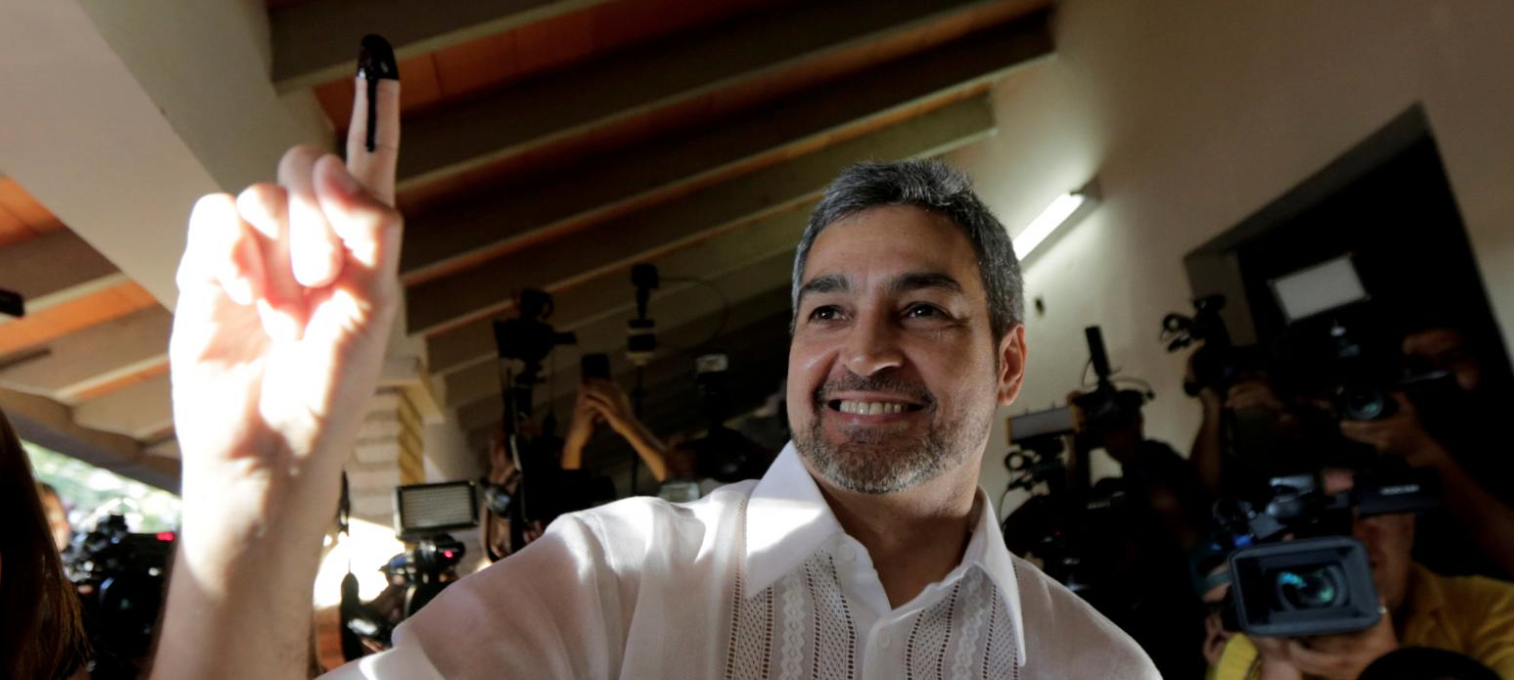
Paraguay’s business-friendly Colorado Party keeps presidency
Abdo supports current low-tax policies aimed at stimulating foreign investment and agricultural production in the world’s No. 4 soybean exporter and a major supplier of beef.
read more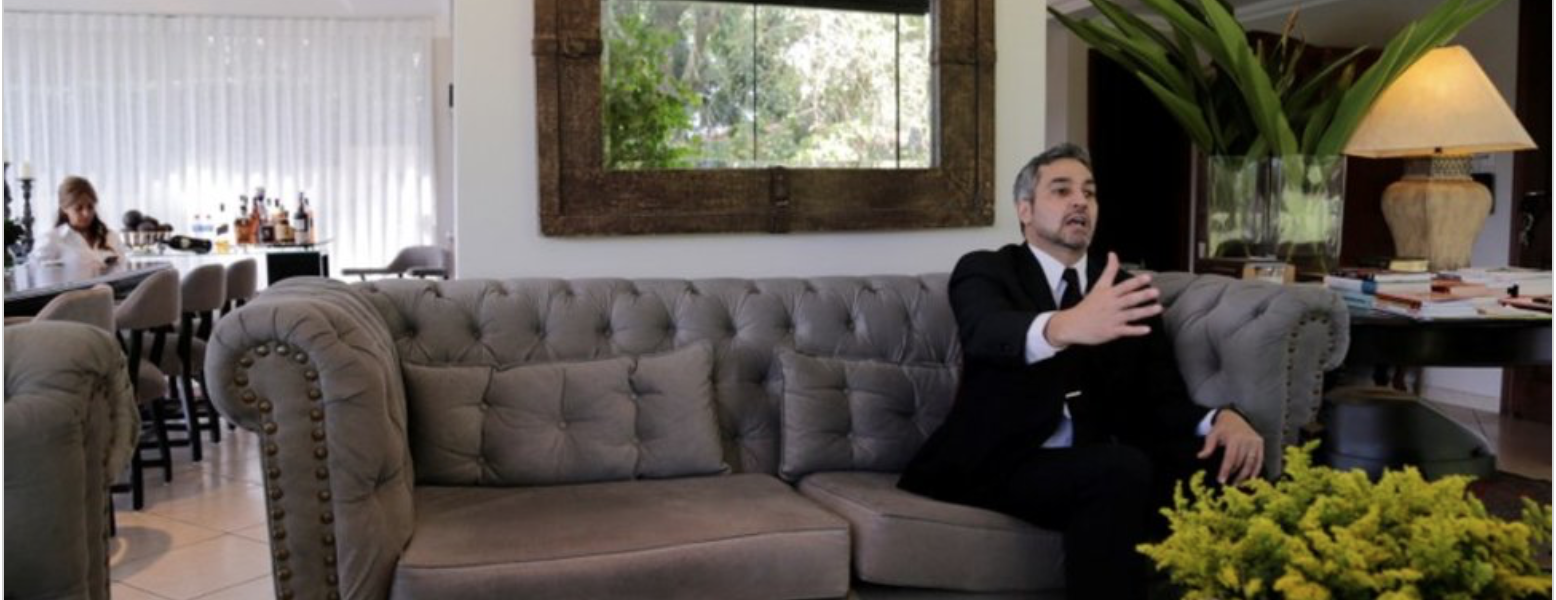
Paraguay Presidential Candidate Would Not Change Tax System
Mario Abdo, the presidential candidate for the ruling party announced that he would not raise taxes on the agricultural sector in order to continue attractiveness to foreign and local investment.
read more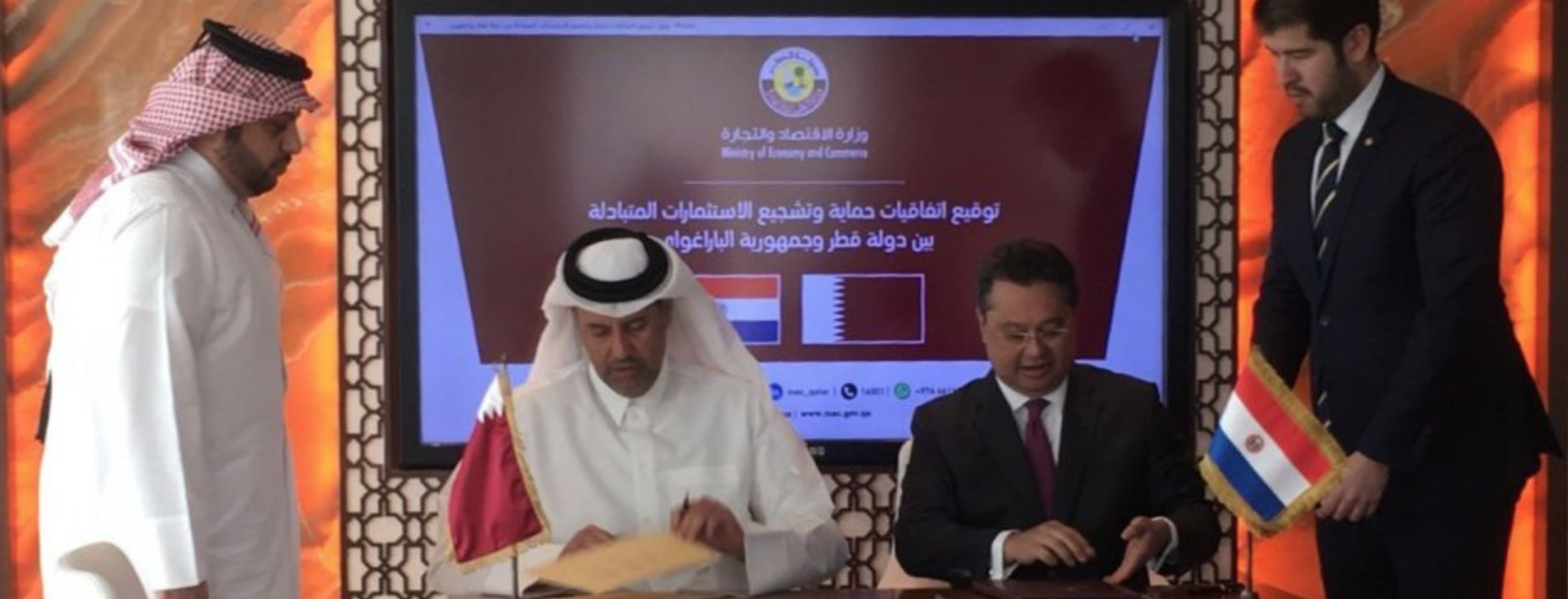
Paraguay to open economic trade ties with Qatar, European Union, Morocco and Canada
New trade agreements between Paraguay and various countries
read more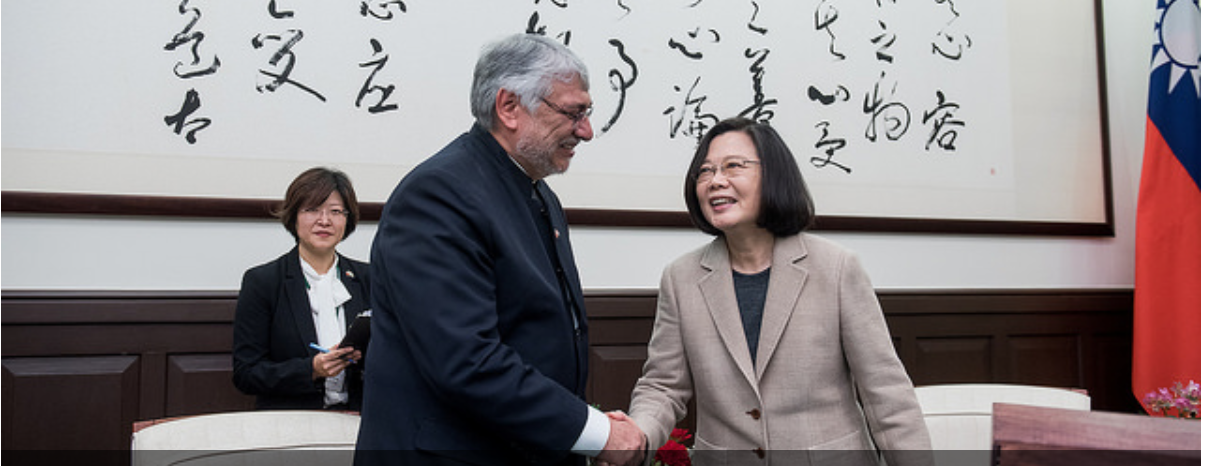
Taiwan to raise quota for beef imported from Paraguay
President Tsai Ing-wen received the Paraguayan delegation on Monday
read more
Southern Connections to exhibit at Agriscape Abu Dhabi on the 14th and 15th of November ’17
Southern Connections is attending Agriscape trade show and congress in AbuDhabi next month.
Click below to read more!
read more
Paraguayan meat receives sanitary approval from the United States
The U.S. has given sanitary approval for the entry of Paraguayan meat into the North American market. It is expected that within 6 months Paraguay will officially start exporting to this new market.
read more
Southern Farmlands to speak at Business Strategy and Wealth Conference – Port Elizabeth (South Africa)
We are speaking on behalf of Southern Farmlands at the Business Strategy and Wealth Conference in Port Elizabeth – South Africa on the 03/10/2017!
Click below to learn more!
read more
Technology is Key in the Future of Farming
Agricultural Technology helps farmers around the world to operate more efficiently, and is a key element in the mission to feed a rapidly growing world population.
Click below to learn more!
read more
Paraguay to pass renewable energy law this year
Paraguay is preparing to issue its first legislation to support the development of renewable energy sources, including solar and wind power, by the end of 2017.
Click to below to read more!
read more
Rural water access: Why should countries follow Paraguay’s lead?
With more than 94% of the rural population accessing safe water, nations across Latin America and beyond can learn from Paraguay’s phenomenal success.
Click below to read more!
read more
Paraguay Decoupling From It’s Larger, Troubled Neighbours
Paraguay’s continous economic growth keeps it on track to soon reach investment grade rating.
Click below to read more!

Double taxation agreement between UAE and Paraguay signed
UAE and Paraguayan authorities have signed an agreement on the avoidance of double taxation and promotion of investments. Click below to read more!
read more
Summary of Paraguay’s monetary policy and inflation
Paraguay keeps rate, lower risk to inflation from USD Original article: Central Bank News Paraguay’s central bank maintained its monetary policy rate at 5.50 percent for the seventh consecutive month, saying the risk to domestic inflation from abroad had eased temporarily in light of the recent depreciation of the U.S. dollar at the global level….Read More→
read more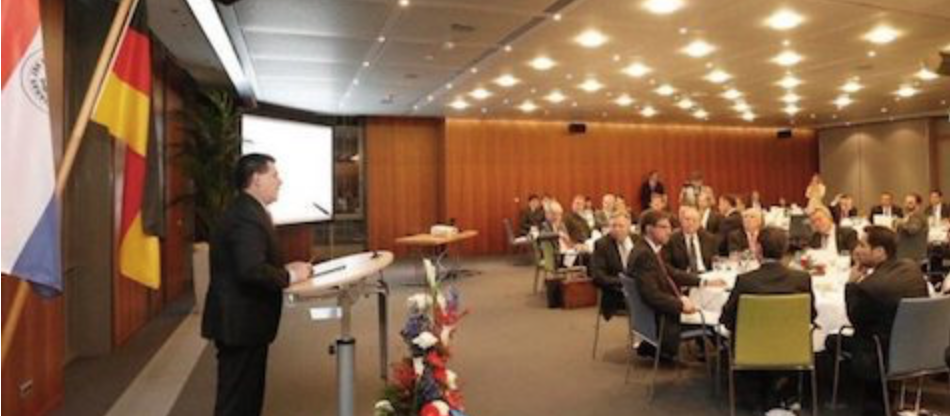
(German) Cartes in Berlin: Ansprache vor der IHK
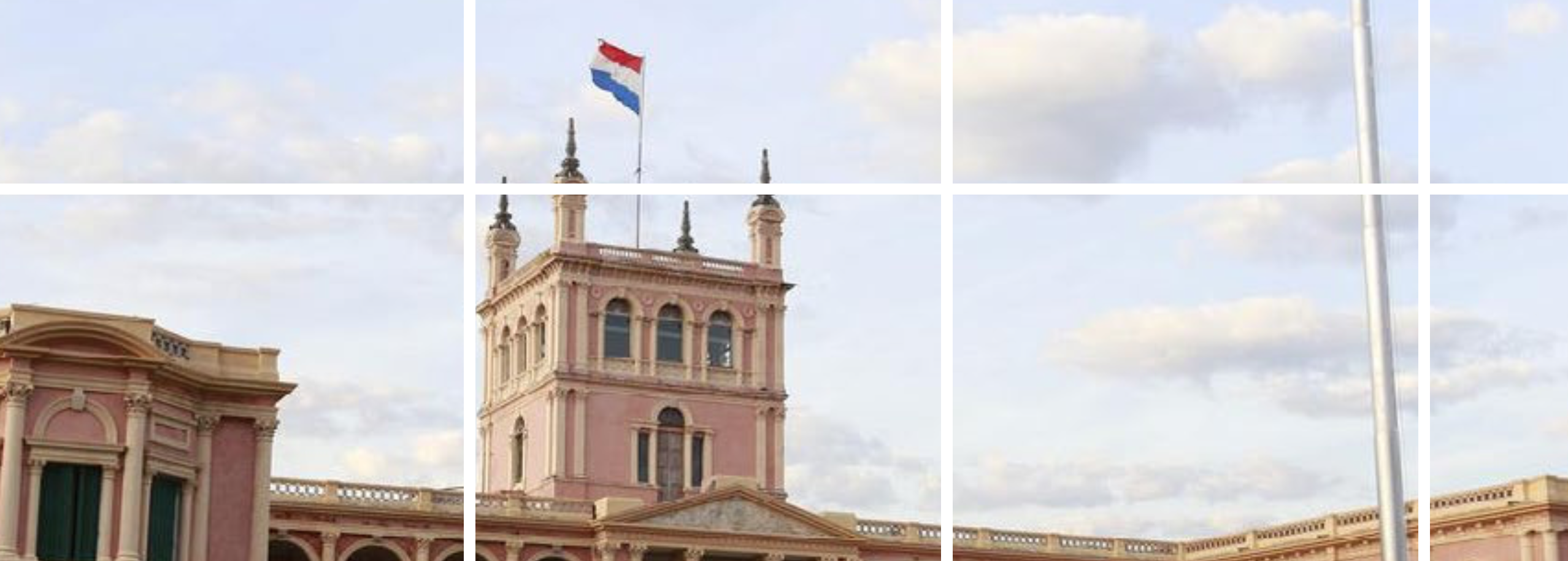
AHK: Business & Investment Guide Paraguay
Excellent Publication by the German-Paraguayan Chamber of Industry and Commerce.
Click below to read more!
read more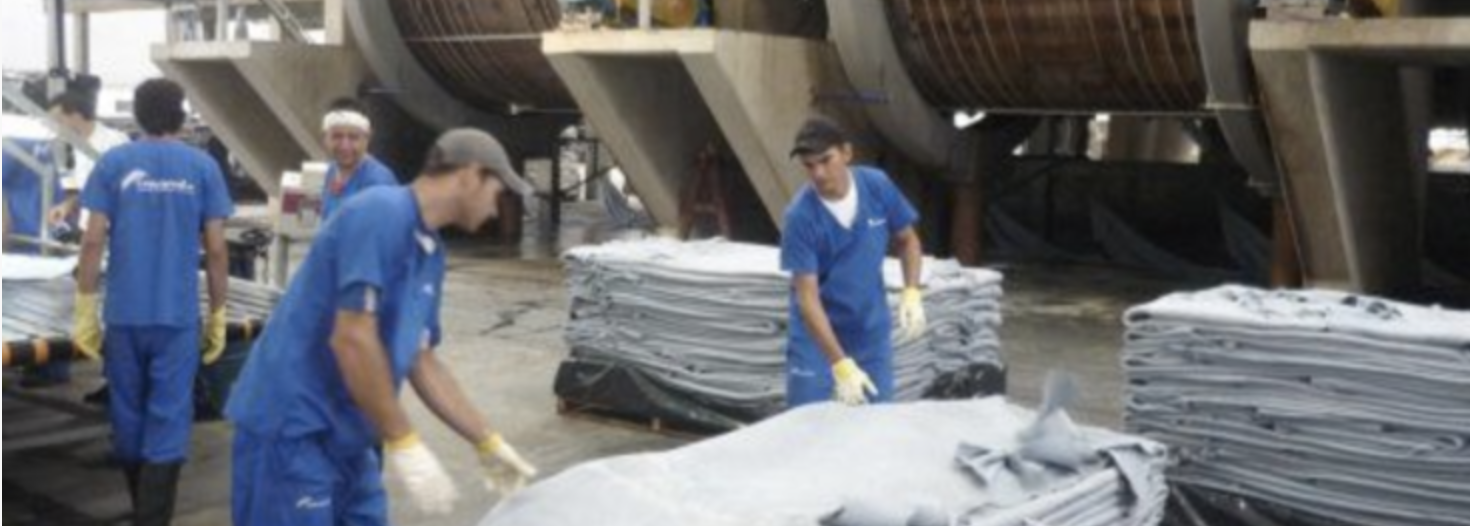
Porsche, Ferrari, and Adidas interested in Paraguayan Leather (Chortizer, Fernheim, and Neuland)
Prestigious international brands sample Paraguayan leather for use in the automotive and foot apparel industry.
Click below to read more!
read more
Paraguay sees economy growing faster than expected
In an interview, Paraguay’s central bank president says GDP is expected to rise 4% this year, up from previous estimates of 3.5%
Click below to learn more!
read more
Announcement: Southern Farmlands
We are very happy to announce the launch of a new farmland investment initiative in the Paraguayan Chaco: Southern Farmlands
Click below to read more!
read more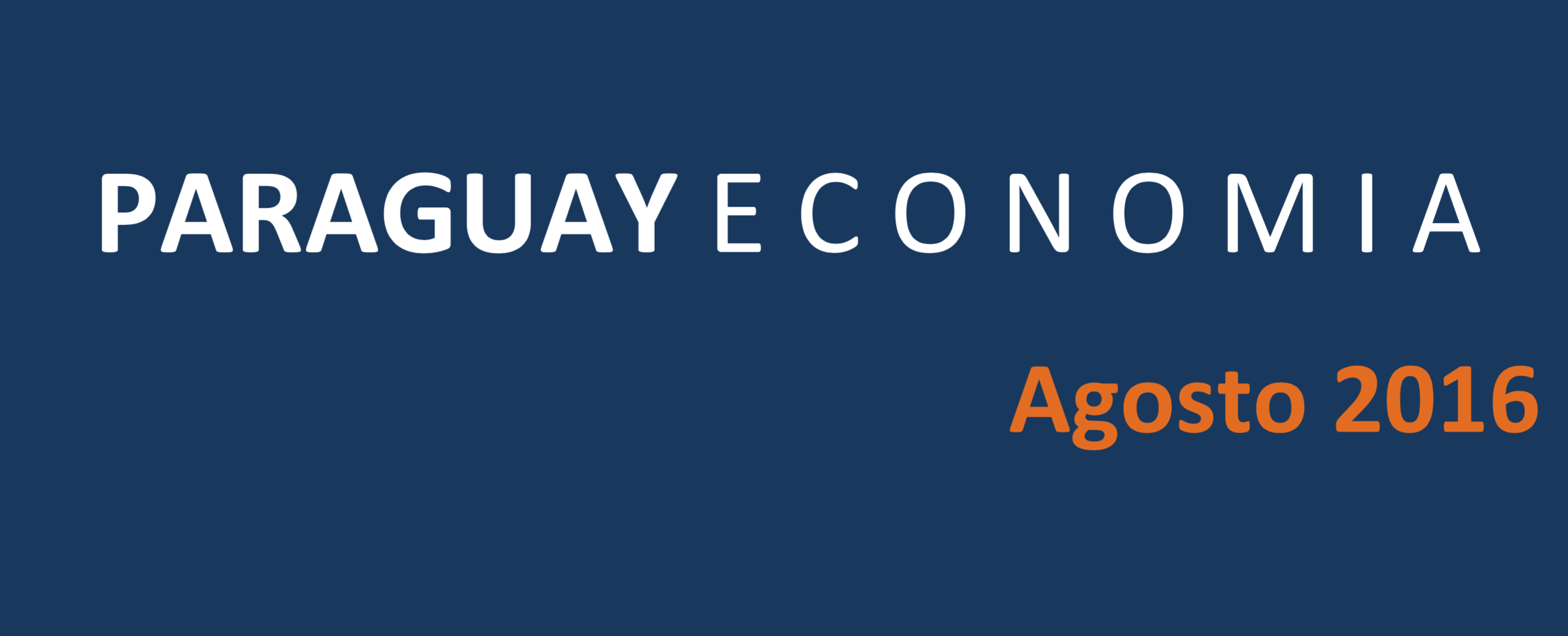
Paraguay Wirtschaft/Paraguay Economia August 16
The latest publication by the German Paraguayan Chamber of Commerce and Industry
read more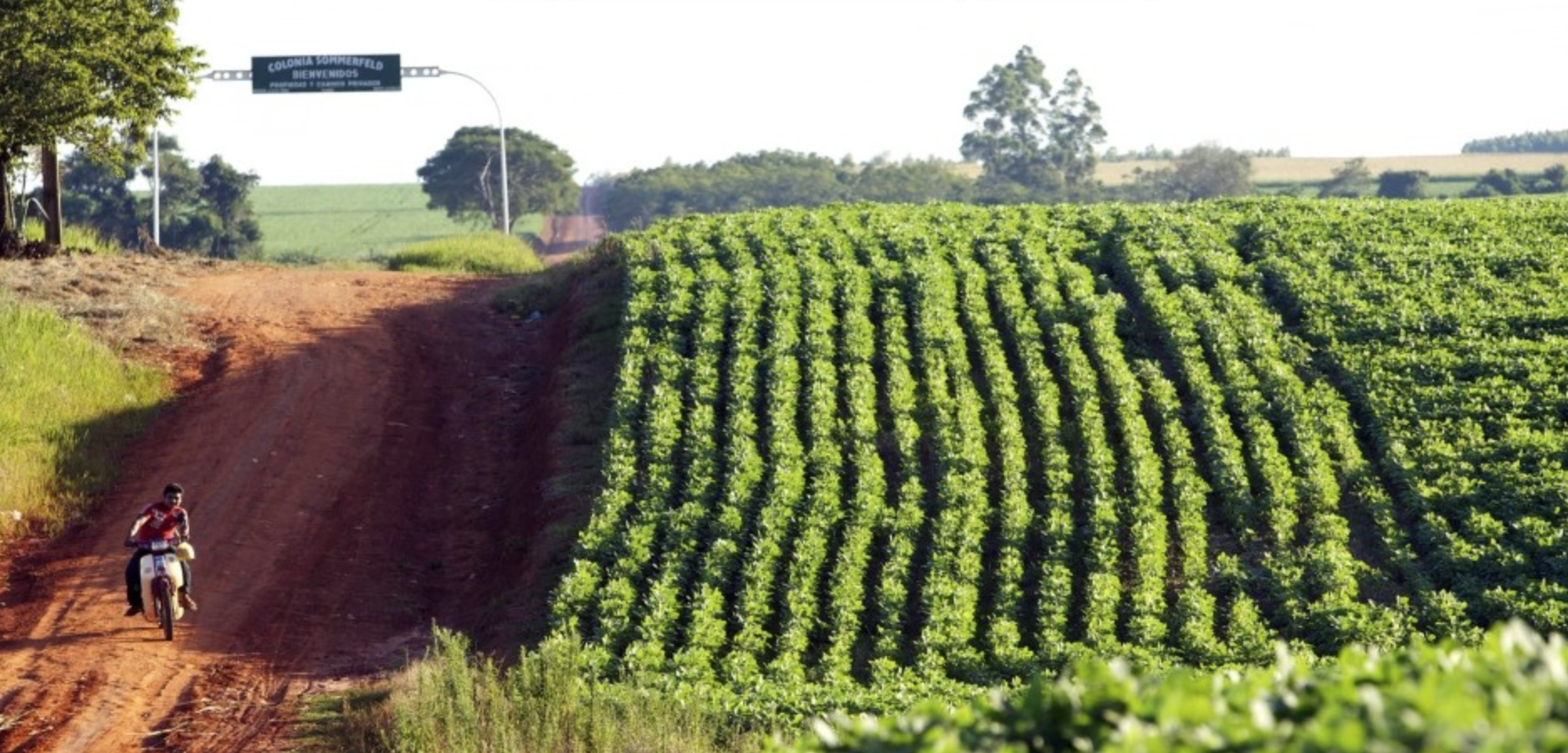
(German) Nur noch kleine Wachstumsinseln in Südamerika
Article of the Frankfurter Allgemeine on economic growth in South America
Gerade die ärmsten und kleinsten Länder bieten Lichtblicke am düsteren Konjunkturhimmel der Region. Auf dem Brüsseler Gipfel präsentieren sie sich selbstbewusst.
read more
Fitch Affirms Paraguay’s FC IDR at ‘BB’, Outlook Stable
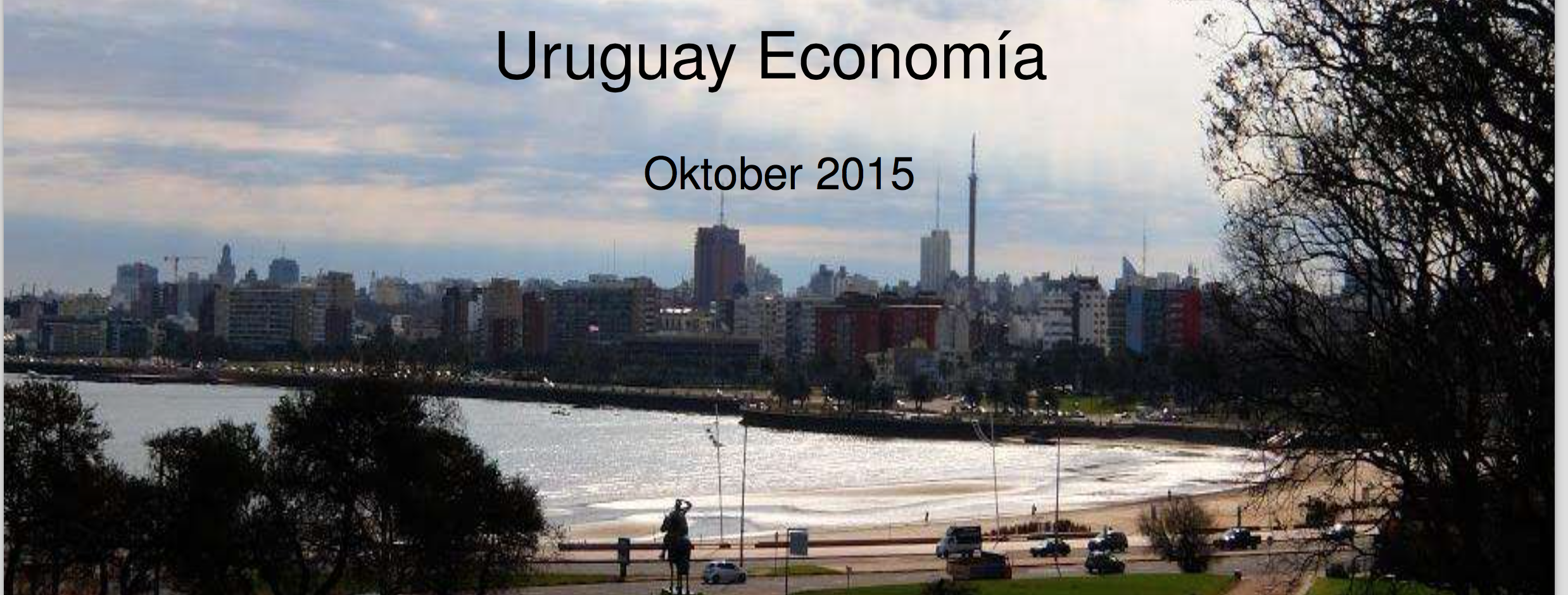
(German/Spanish) Uruguay exports a new certified beef line that is free of any artificial antibiotics, hormones and protein
A German and Spanish commentary by the Uruguayan-German Chamber of Commerce on Uruguay exporting a new certified beef line that is free of any artificial antibiotics, hormones and protein
read more
Four Tips for Understanding Land Value
“For any recreational property buyer, one of the most important things you’ll want to know is whether the price you’re paying truly reflects that property’s market value”
An article by LandThink.com – Click below to read more!
read more
(Spanish) Germany interested in creating new commercial relationships with Paraguay
Paraguay’s minister of Industry and Commerce to participate at the 14th Latin American conference of German commerce in Berlin, Germany.
read more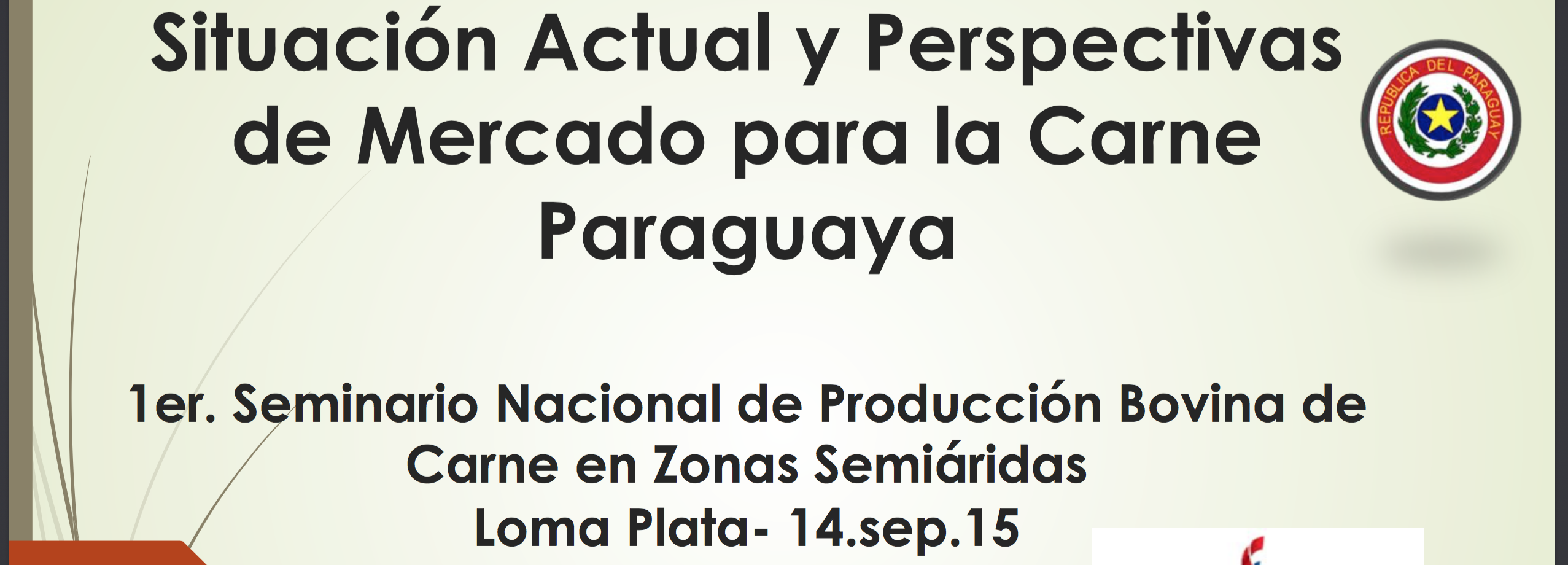
(Spanish) Current Situation and Perspective of Paraguayan Livestock
Following a presentation in spanish on the current market conditions for Paraguayan beef, including a future outlook, shared with the permission of the Paraguayan vice-president of the ministry of livestock.
Click Below to read more!
read more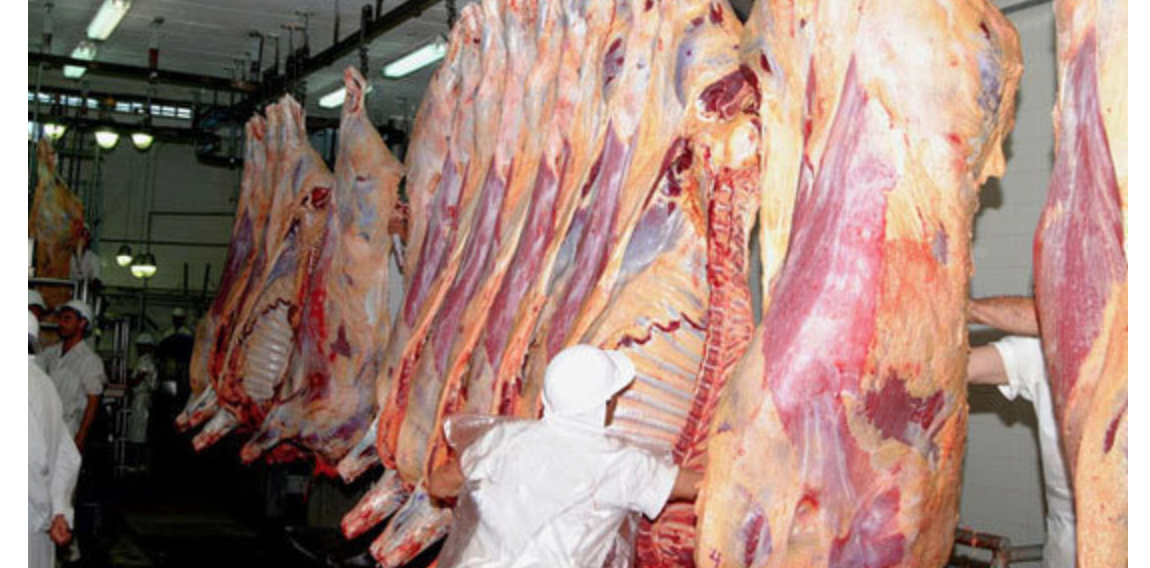
(Spanish) Saudi Arabia to Reopen itself to the Paraguayan Beef Market
Saudi Arabia expected to receive its first delivery of Paraguayan Beef by the end of the year
Click below to read more!
read more
Einwanderungsberatung – Deutschsprachiges Notariat
Einwanderungsberatung – dienstleistungsorientiertes deutschsprachiges Notariat und Consulting-Büro
read more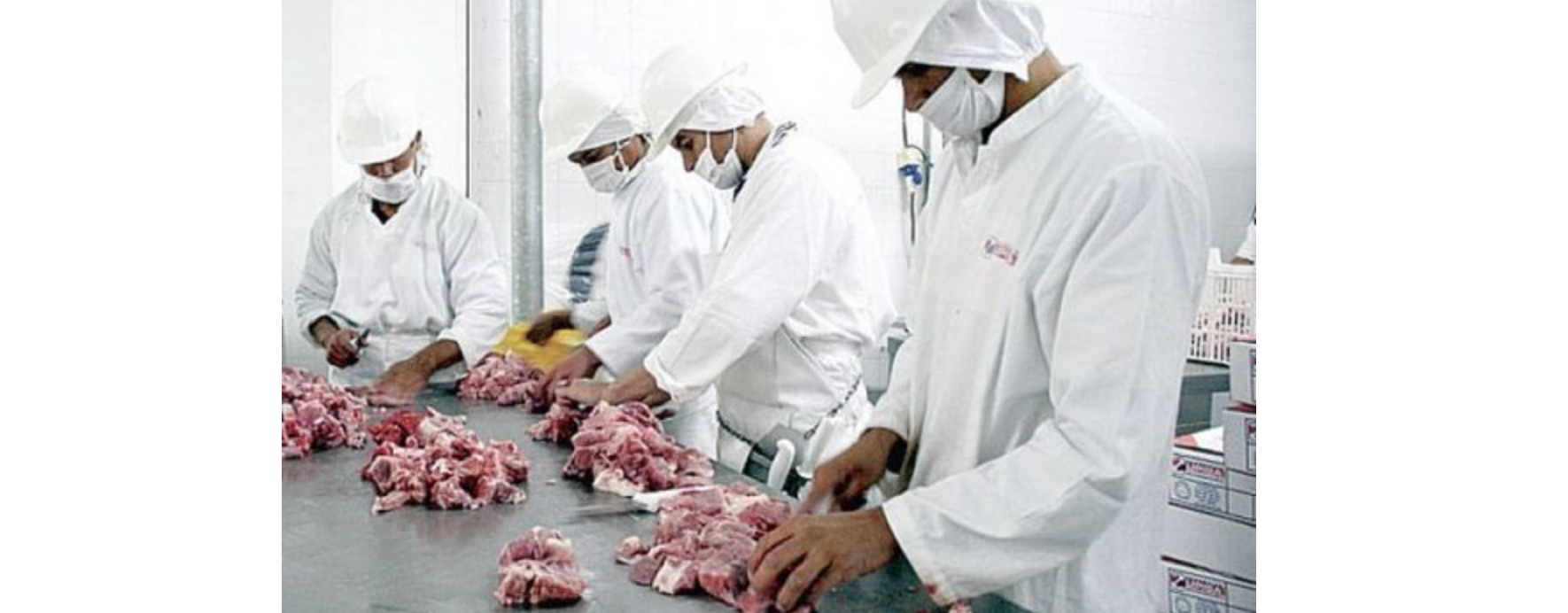
(Spanish) Israel, Mercado Premium para la Carne Paraguaya,
The Ambassador of Israel in Paraguay, Peleg Lewi, is reinforcing the relationship between the two countries, informing that Israel is a major beef importer from Paraguay, while the later currently uses a lot of agricultural technology from Israel.
read more
(German) Beef of Paraguay / Rindfleisch aus Paraguay
The following is an advertisement flyer of Frigorifico Neuland, one of the local slaughterhouses in Paraguay. It offers information on local beef production and processing, meat quality, as well as export and local consumption.
read more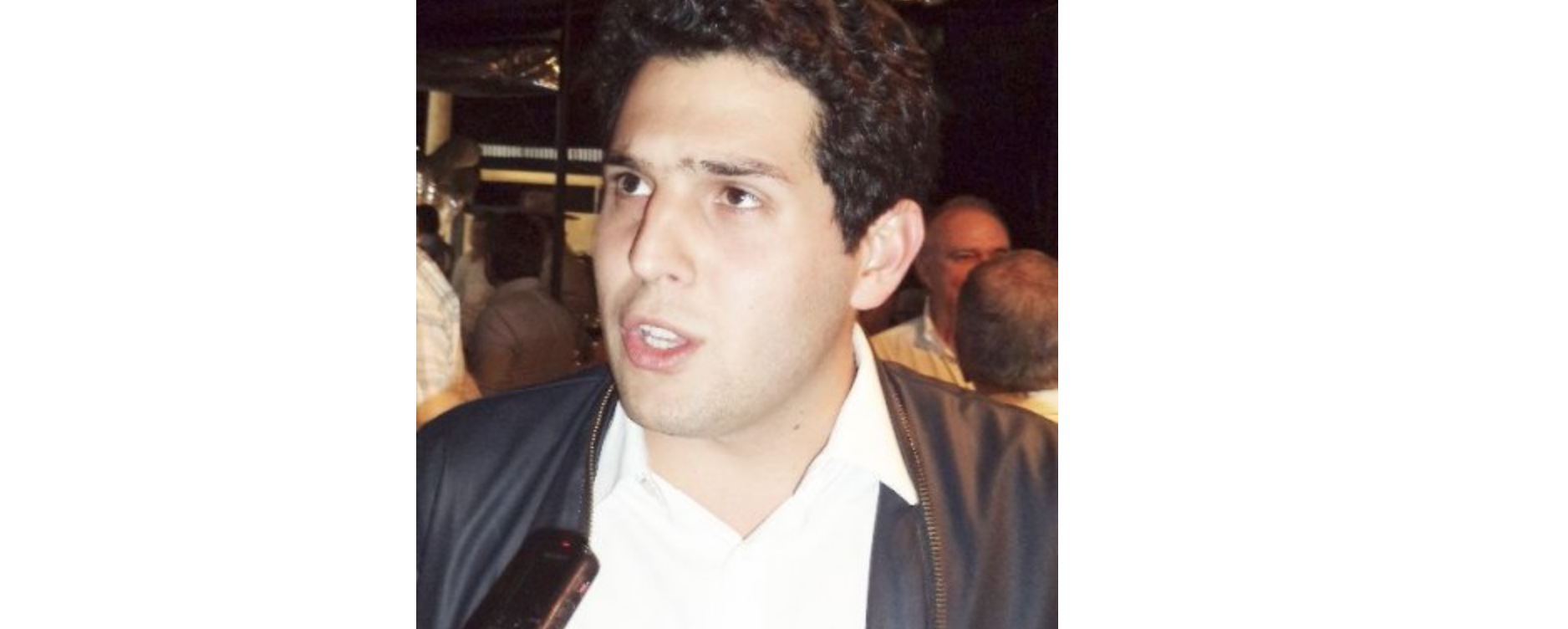
(Spanish) New US$ 60 Million Slaughtering facility to be constructed
Brazilian JBS to invest US$ 60 Million in new slaughter facility in Paraguay.
Click below to read more!
read more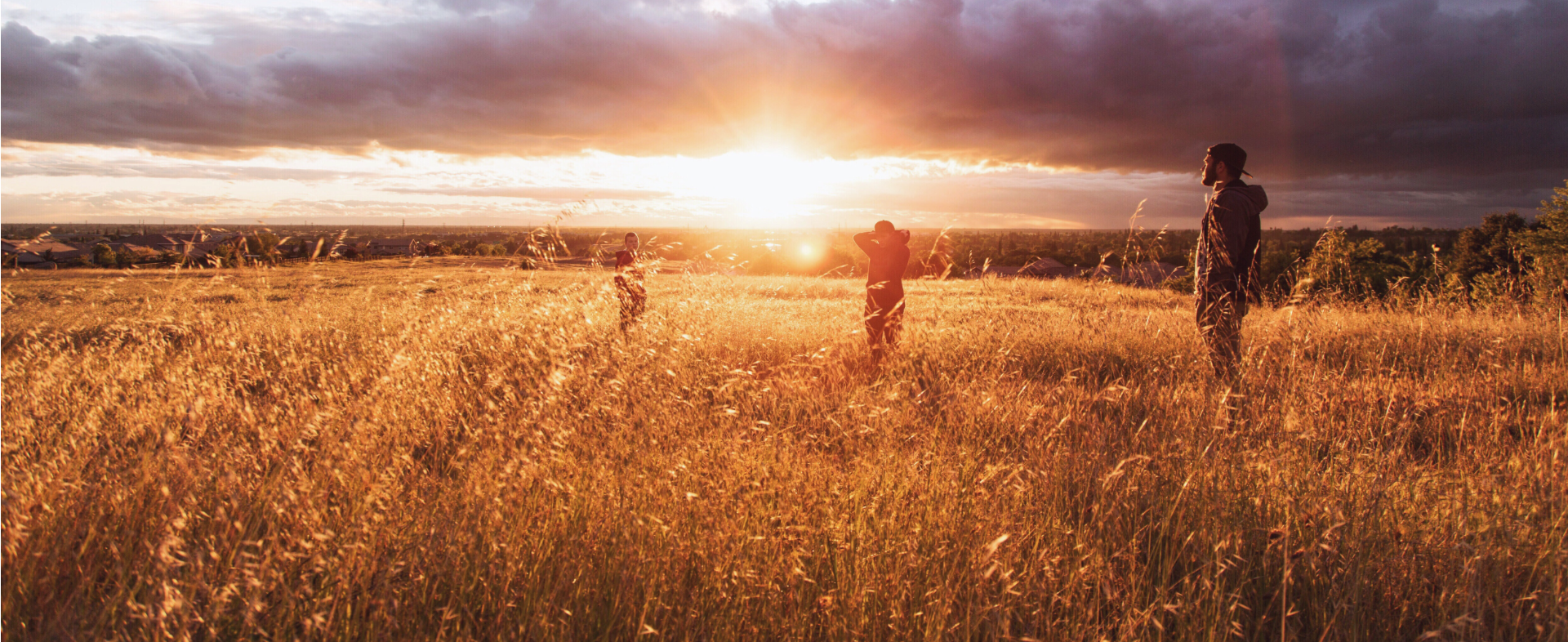
The Opportunity For The Small Investor In Paraguay Today
To successfully acquire agricultural real estate and engage in livestock production, a relatively high minimum investment is required. We are happy to offer a solution to lower minimums.
Click below to read more!
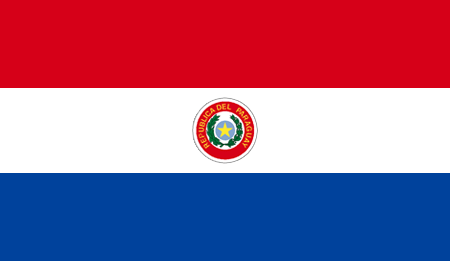
Dispelling the myths about Paraguay
Paraguay’s reputation as an investment destination has suffered in recent years but its openness to foreign investment and the tax incentives on offer are making it increasingly appealing, argues Lennart Stahr of family-run Southern Connections Agro Consulting and Management.
read more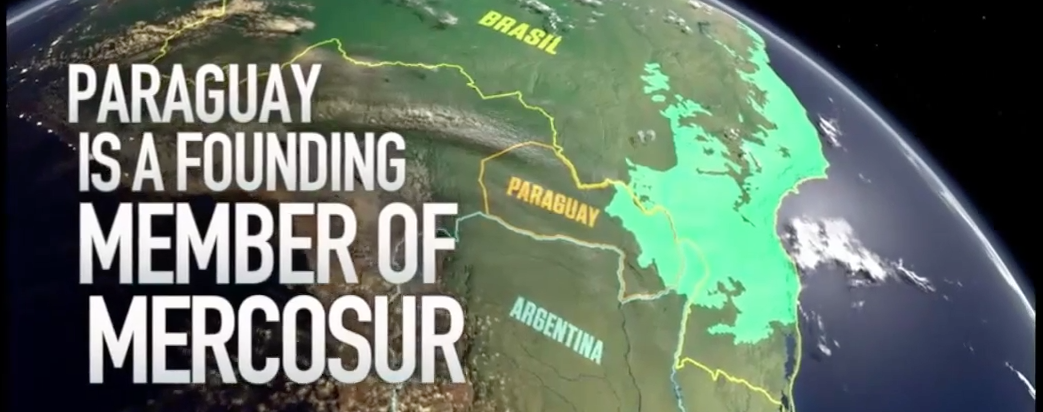
Paraguay Land of Opportunities
A great video on Paraguay, showcasing some economic data and fiscal benefits of foreign investments in the country
read more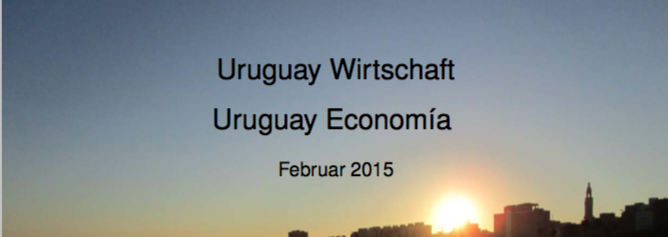
(Spanish/German) Uruguay Wirtschaft / Uruguay Economía
Release on the current economic development of Uruguay as well as news and trade in individual sectors.
Click below to read more!
read more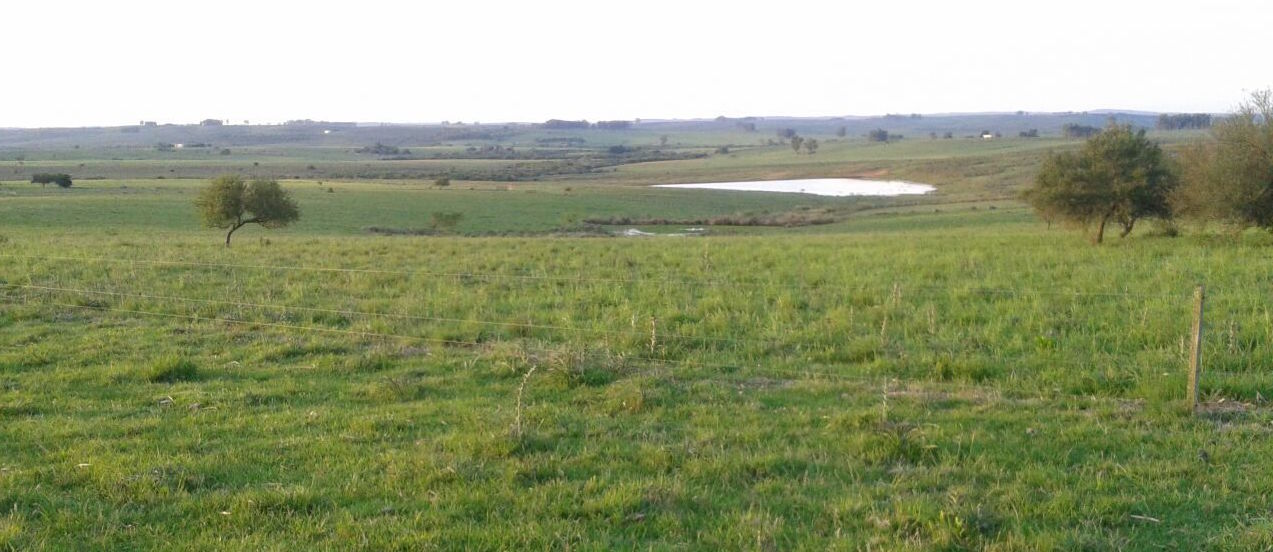
USDA Paraguay Livestock and Products Annual 2014
Happy 2015 from the Southern Connections Team/USDA Paraguay Livestock and Products Annual 2014
read more
No end in sight for China´s cattle shortage
Beef and veil are China´s fastest growing fresh meat performers. Increasing local demand and a declining national heard cause prices to spiral upward.
Click below to read more!
read more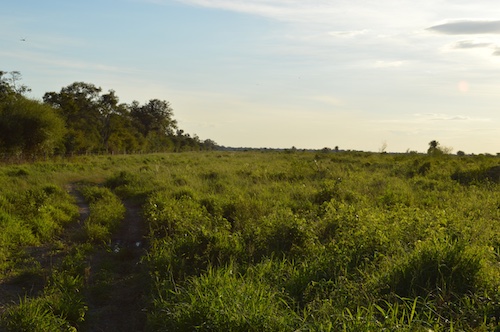
Livestock Investment Opportunities in Paraguay
Our editorial on the livestock investment opportunities in the Chaco area of Paraguay. Featured on Global AgInvesting.
Click below to read the full editorial!
read more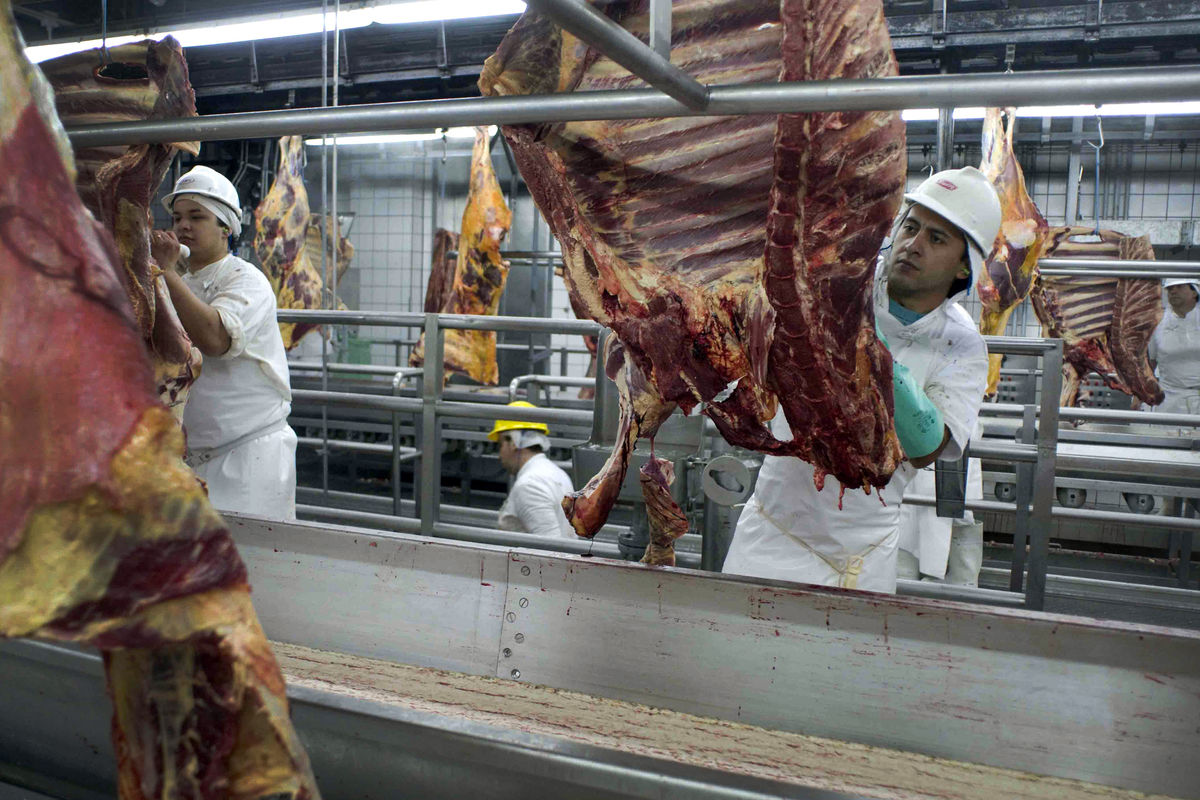
Beef King Sees Record Rally Extended as Ranchers Struggle
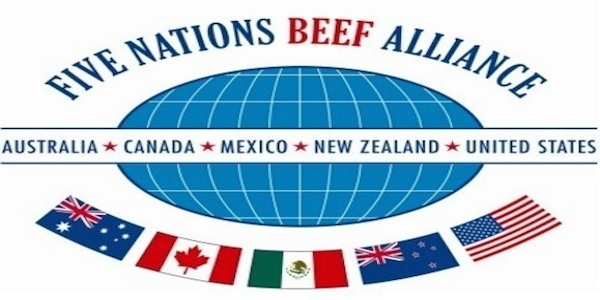
PARAGUAY WAS ACCEPTED AS OBSERVER MEMBER BETWEEN THE LARGEST PRODUCERS OF THE WORLD MEAT
In the last meeting between the five countries with the highest production of beef in the world, Paraguay was accepted as an observer for a period of one year to later become a full member of the Pacific Alliance
read more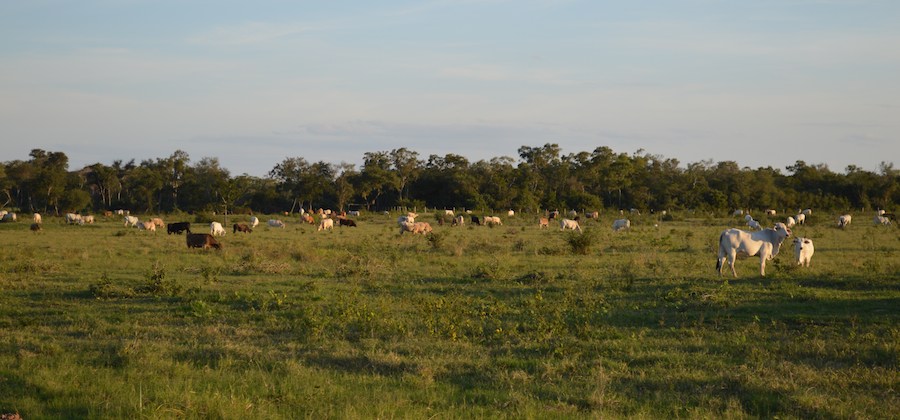
Paraguay becomes world´s 8th -largest exporter of beef
Paraguay is the world´s 8th largest beef exporter and plans to double current export by the year 2020.
Click below to read more!
read more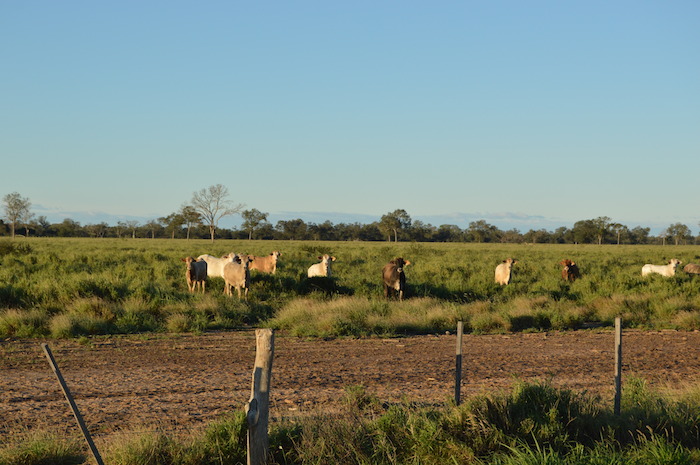
Investing Strategically in Large Rural Land Tracts Can Lead to Maximizing ROI
Originally tailored towards investments in U.S. farmland, the key arguments outlined in this article are true for investments anywhere around the world.
Click below to read more!
read more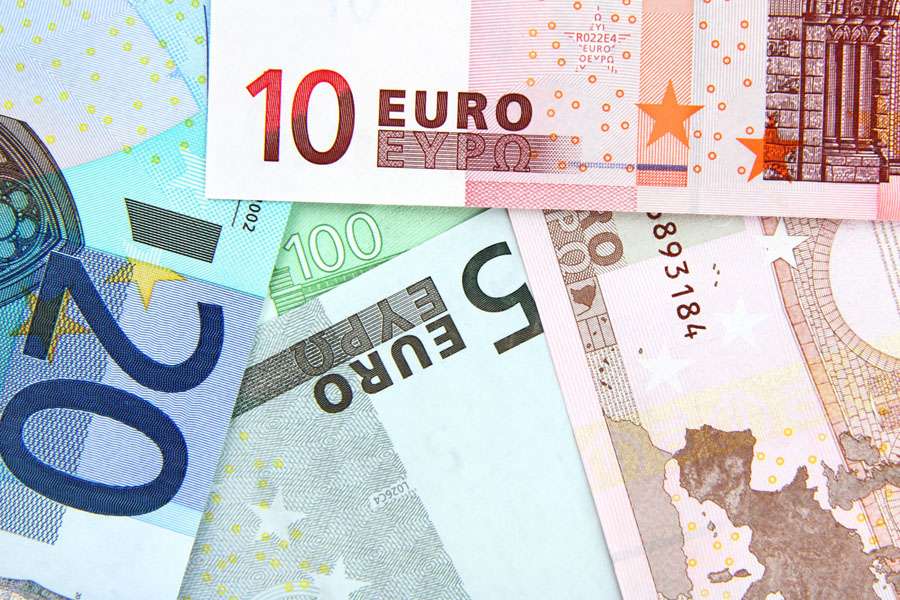
(German) Why you should invest in South America
Warum Sie Jetzt In Südamerika Investieren Sollten
An article by german financial news editor and author Thomas Freud on the investment opportunities in Paraguay.
Click below to read the full article!
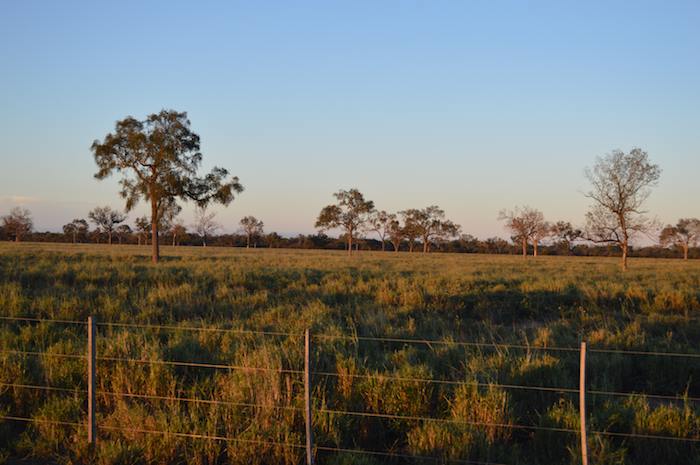
The rush for the last South-American land reserve: the Paraguayan Chaco
An exceptional research paper on new investments in the Paraguayan Chaco by Gemma Verijdt from the University of Utrecht.
Click below to read more!

Uruguay to Host World Meat Congress
Uruguay will host the World Meat Congress in 2016 in the city of Punta del Este.
Click below to read more!
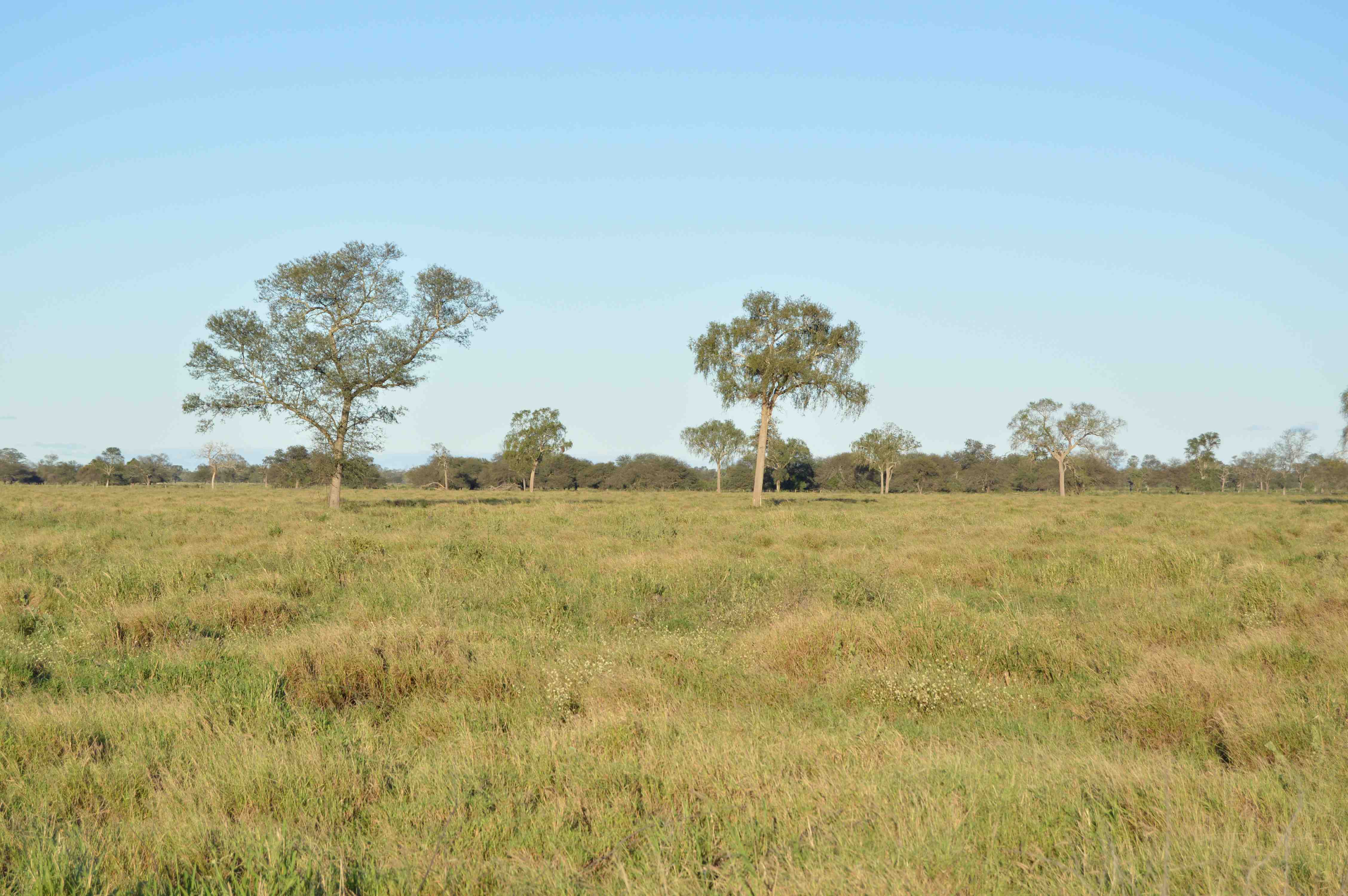
Making the Financial Argument for Land Investing
An excellent blog on why investing in farmland makes sense for any investor.
Click below to read more!
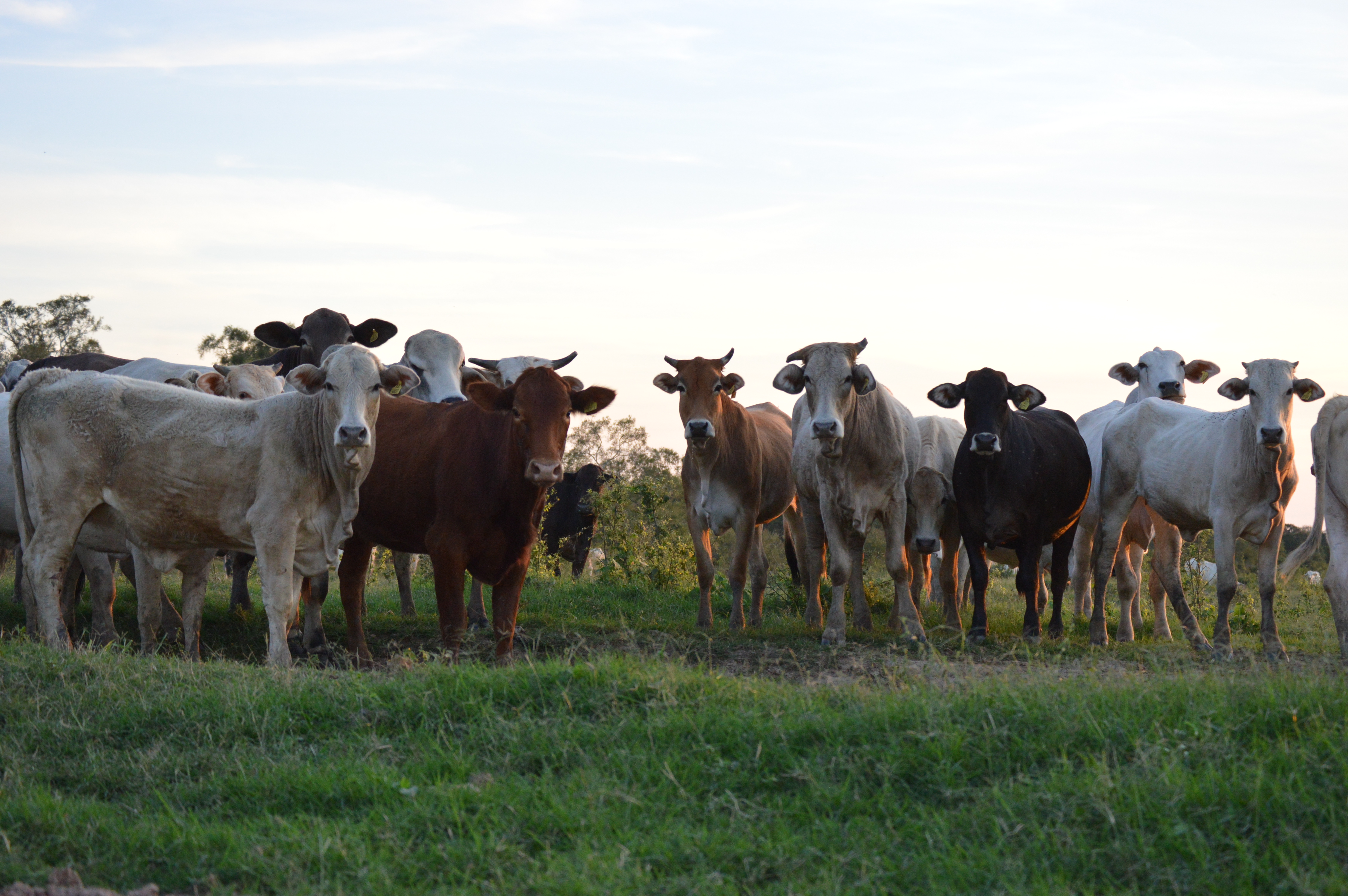
More Individuals Are Looking to Invest in Farmland and Timberland
Land Holdings May Provide Income, Diversification and a Hedge Against Inflation
Click below to read the full article!
read more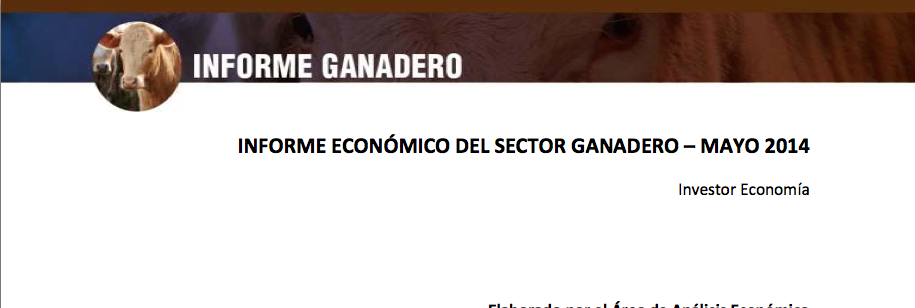
(Spanish) Informe Sector Ganadero
An informative analysis on the current market conditions of the livestock sector by Investor Economía, focused mainly on the South American region.
read more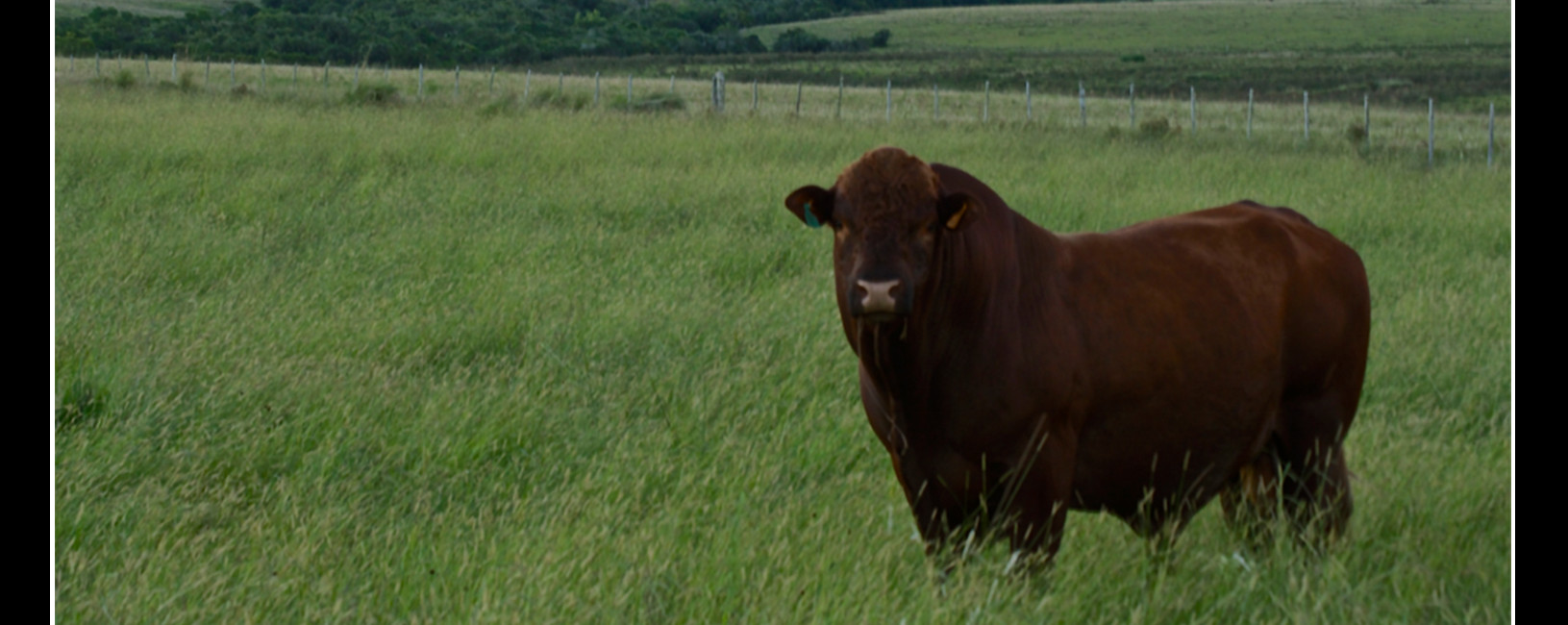
World Bank warns of food riots as prices grow
Worldwide food prices are rising significantly. with Cityscape Qatar starting tomorrow, do not miss this opportunity visit us at stand 8D40 to find out more about the incredible opportunities available in agricultural real estate!
read more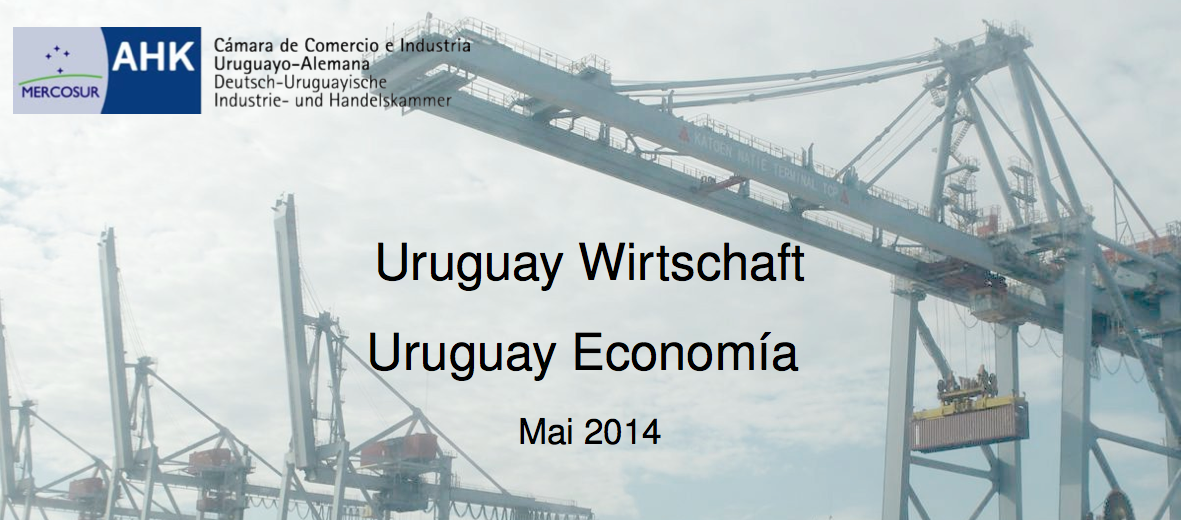
(German/Spanish) The May 2014 Press Release by the Uruguayan-German Chamber of Commerce
Uruguay Wirtschaft/Uruguay Economía
See the full article here!
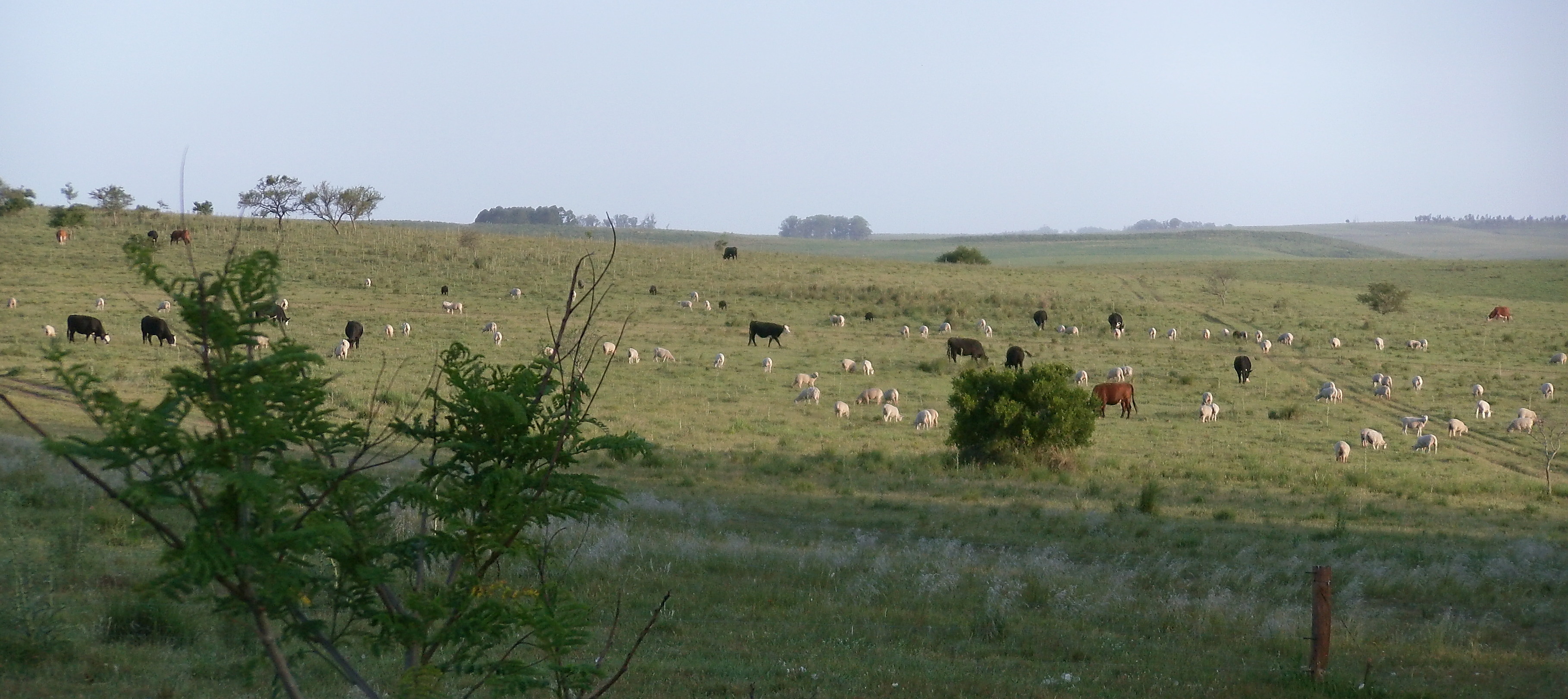
Four great reasons to eat organic, grass-fed beef
Organic beef is full of important nutrients necessary for human health. Click here to find out more.
read more
What Matters Most When Considering an Investment in Agricultural Real Estate?
The latest in Real Estate. See it first at Cityscape Qatar!
read more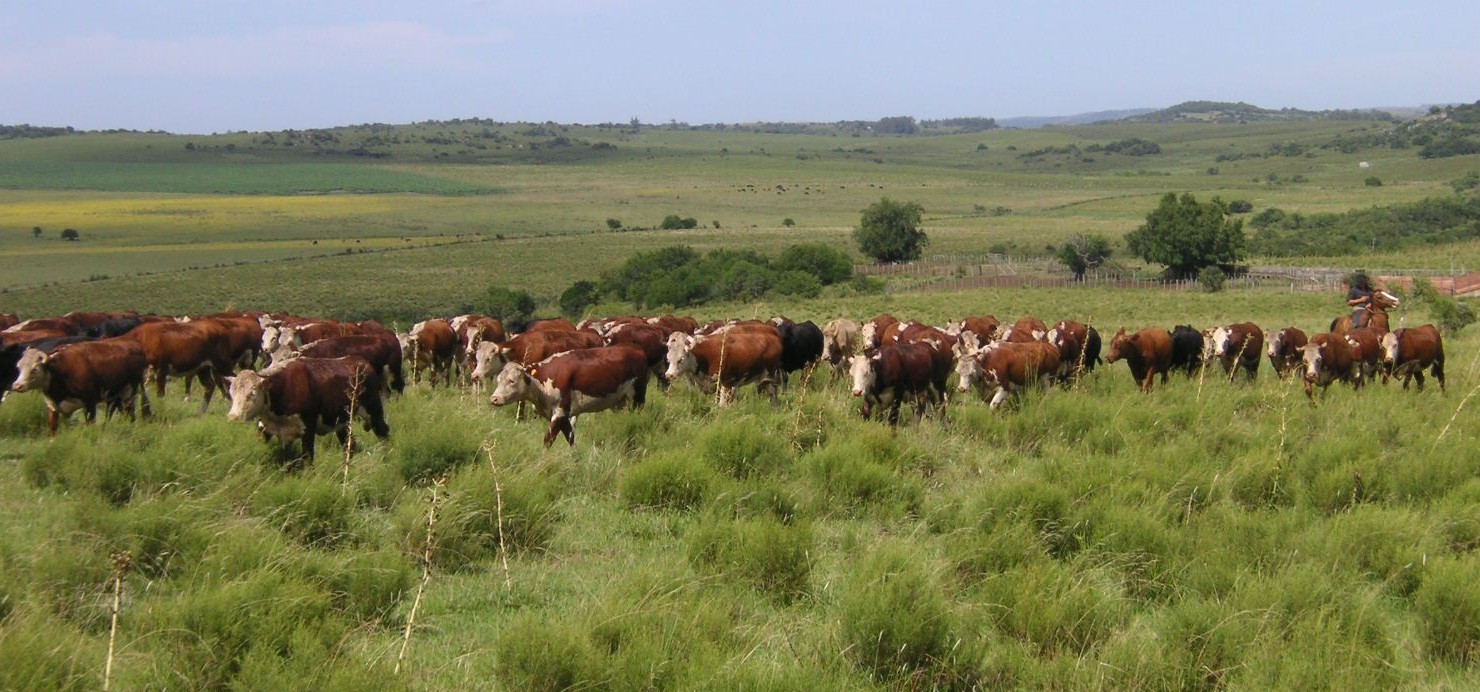
Strong Global Demand for Beef
Global beef demand is increasing, mainly due to a decrease in supply from regions of production. The article also includes regional outlooks for the beef industry along with current market information after the first quarter of 2014.
read more
(Spanish) Expecting the reopening of European meat market
An article by Paraguay´s “La Nación” on the reopening of the Paraguayan beef export to the European market.
read more
Important News: Southern Connections will attend CityScape Qatar
Southern Connections will attend the City Scape Qatar Real Estate exhibition in Doha, Qatar from 2 – 4 of June!
read more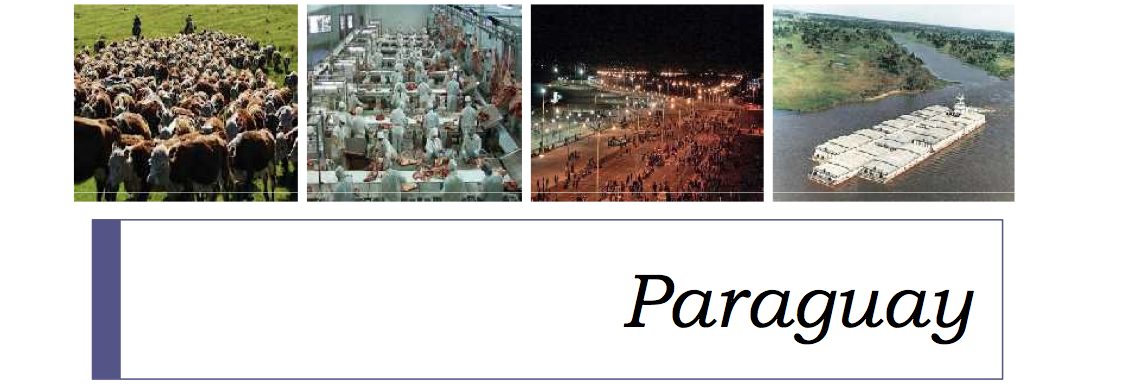
(English) Country Presentation: Paraguay
An excellent video and article on the great investment opportunities of Paraguay! A must see for anyone interested in investing in the country. Let us help you be part of the economical boom of Paraguay, contact Southern Connections today!
read more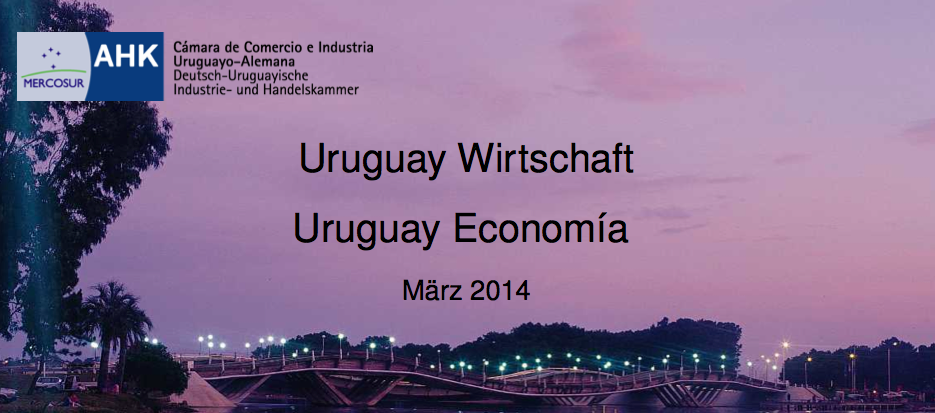
(German/Spanish) Uruguay Wirtschaft / Uruguay Economía
A monthly press release by the Uruguayan-German Chamber of Commerce and Industry on the economy of Uruguay in German and Spanish
read more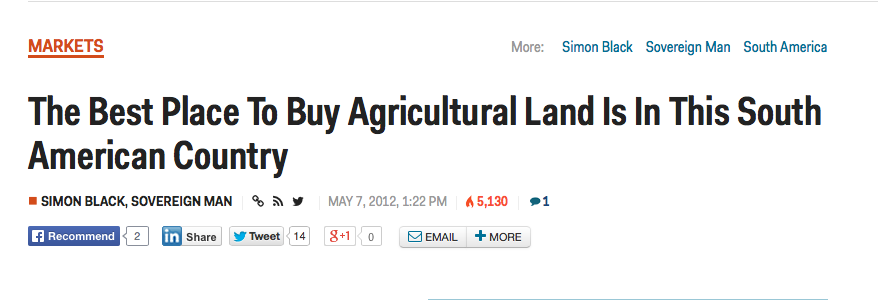
(English) The Best Place To Buy Agricultural Land Is In This South American Country
Although a bit outdated, this article from “Business Insider” describes the basic agricultural business fundamentals and gives an introduction into Paraguayan Farming. We highly recommend this article to anyone looking to find out more about the benefits of investing in farmland.
read more
(Spanish) Mejora la calificación de Paraguay
(Spanish) The credit rating agencies Moody´s and Fitch have raised their qualifications for Paraguay.
read more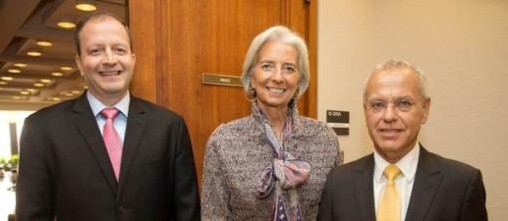
(Spanish) Paraguay es una de las mejores economías de Latinoamérica, según FMI
An article from the Paraguayan News Agency “La Nación” which explains that the International Monetary Fund has ranked the country as one of the best economies of Latin America
read more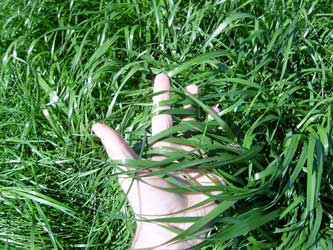
Pasture Seed Production.
There is a strong small to medium scale pasture seed production in the Central Chaco of Paraguay at farm level. The seed produced are Panicum maxium cv. Gatton, Cenchrus ciliaris cv. Texas 4464 and Bella, Urochloa mosambicensis, Chloris gayana cv. Callide, selections of Digitaria milanjiana, Panicum coloratum cv. Bambatsi, Sorghum sudanense, Leucaena leucocephala, Alysicarpus vaginalis, Desmanthus virgatus cv. Filadelfia and Stylosanthes hippocampoides cv.
read more
Uruguay & Paraguay Beef
Beef is commonly produced in extensive systems on the 165,000 square km of native pastures and grazed bush land plus 33,000 square km of cultivated pastures. Main capital investments refer to fencing, establishment of herd handling facilities, construction of dams or so called “Tajamares” (basins for rain water collection) and pasture establishment and maintenance.
read more
Chaco Soil
The Paraguayan Chaco is dominated by geologically relatively young eutric cambisols and orthic luvisols with loamy textures (BGR 2001). As the distance from the Andes increases, soils tend to become finer in texture. The dominating soils in the Chaco have no major limitations in soil fertility, there are however big differences in water availability (drought and excess of water) over long periods (Fatecha 1989).
read more